
BLOG: APPLIED RESEARCH OF EMMANUEL GOSPEL CENTER
Church Landscape Review: Pastoring Under Pressure
In the last 10 years, pastors have faced unprecedented challenges in shepherding their congregations. How did pastors in Boston hold up under the pressure?
Church Landscape Review: Pastoring Under Pressure
In the last 10 years, pastors have faced unprecedented challenges in shepherding their congregations. Even veteran pastors admitted they had never seen anything like this during their ministerial careers.
During the pandemic, almost half of pastors nationwide considered leaving full-time ministry.
What about pastors in Boston? How many hours a week do they work? What kind of support do they prefer? What type of training do they use to develop other church leaders? What questions would they like to ask other pastors?
The Emmanuel Gospel Center’s Applied Research team explored difficult questions like these in a study of pastors of new churches in the Boston area from 2014 to 2024. In “Pastoring Under Pressure,” the team analyzed key trends and critical challenges facing these leaders. The report also includes recommendations as well as reflection questions for pastors and church leaders.
This report is part of the larger 2024 Church Landscape Review, a study of newer church communities in the Boston area over 10 years. We will publish the Applied Research team’s findings in a series of reports to be released periodically throughout 2025:
Evolving Vision*
Open Doors in Boston*
Church Sustainability*
*Titles are subject to change.
If the Black Church were to disappear, who would miss it?
There are about 250 Black churches in Boston facing multiple challenges. To leverage their collective strength, almost a dozen of them came together to build relationships for the betterment of the community.
(Clockwise from top left: wwing, wwing, timeless, MCCAIG, all via Getty Images)
If the Black Church were to disappear, who would miss it?
“If the Black Church were to disappear, who would miss it?”
That’s the overarching question Jaronzie Harris and her team led with as they began a data-driven study of the Black Church in Boston.
The team tried to answer a series of questions: “Who’s in the Church? What are they doing? How’s the Church doing? How many churches do we have? What are these Black Christians even thinking about or talking about? Do they even talk to each other?”
Jaronzie Harris, Director, Black Church Vitality Project. Emmanuel Gospel Center
In partnership with several organizations, Harris’s efforts helped establish the Black Church Vitality Project, an initiative close to her heart as a daughter of the Black Church.
“My love for the Church really comes out of my love for Black people, Black communities,” Harris told the Emmanuel Gospel Center’s Curious City podcast. “Always having that sense of service and a faith centered in hope and love.”
The team’s research found there are about 250 Black churches in Boston facing multiple challenges. To leverage their collective strength, Harris sought to bring some of these churches together to build relationships for the betterment of the community. She gathered almost a dozen Black churches in close proximity to each other in four predominantly Black neighborhoods of Boston.
Together, they looked at the changes taking place in their local communities, how their mission and values might need to change in light of what they’re learning about their neighborhoods, and how their churches can take action.
These topics made for vulnerable conversations. And while not everyone is on the same page, Harris said the desire is there among the churches to work together.
These meetings and discussions between these churches make for a dynamic, relational process that’s transformative in and of itself. It holds up a mirror for the churches to assess themselves in the immediate context of their neighborhoods and the broader culture they live in.
“My love for the Church comes from my love for Black people,” Harris said, “so if the Church is not serving the people, then what are we doing?”
For this and more from Harris’s conversation with Caleb McCoy, listen to the Curious City podcast.
Apple Podcasts | Podbean | Spotify | YouTube
Church Landscape Review: Changing Faces of Faith
Churches have experienced plenty of change and faced much upheaval over the last 10 years. If you could take a snapshot of your church before and after that period, what would it look like? Would you see any big structural changes? How would the leadership of your church have changed? What about the congregation?
Churches have experienced plenty of change and faced much upheaval over the last 10 years. If you could take a snapshot of your church before and after that period, what would it look like? Would you see any big structural changes? How would the leadership of your church have changed? What about the congregation?
That’s just what the Applied Research team at the Emmanuel Gospel Center did with a diverse group of newer churches in Boston between 2014 and 2024.
They looked at things like attendance, leadership, and demographics. Their findings in the “Changing Faces of Faith” report show time left little untouched. The churches in the study had to be creative when it came to finding meeting space, facing a pandemic, and navigating leadership changes.
This report is part of the larger 2024 Church Landscape Review, a study of newer church communities in the Boston area over 10 years. We will publish the Applied Research team’s findings in a series of reports we will release periodically throughout 2025:
Evolving Vision*
Open Doors in Boston*
*Titles are subject to change.
Church Landscape Review: Executive Summary Report
How has the church landscape in Boston changed over the last ten years? EGC’s Applied Research team analyzes the data from before-and-after snapshots of a group of newer churches between 2014 and 2024.
In 2014, the Emmanuel Gospel Center (EGC) conducted a research study of over 40 church plants in the Boston area. It involved in-depth interviews with a diverse group of new churches from different denominations, ethnic groups, and networks. While the study focused on women in church leadership, it yielded a treasure trove of information on the church planters and their congregations.
Ten years later, EGC’s Applied Research team revisited the snapshot the 2014 data had produced and re-interviewed almost two dozen of the original churches. The team wanted to examine any shifts in the church landscape over a challenging and tumultuous period.
The research team gathered their findings in a series of reports we will release periodically throughout 2025. The Executive Summary Report provides a broad introduction to the study along with major data trends. The other reports revolve around four different themes:
Evolving Vision*
Open Doors in Boston*
*Titles are subject to change.
Exploring Church Spaces
Christians look on in dismay as empty churches are converted into luxury condos, but congregations are beginning to reassess how their sacred spaces are used outside Sunday worship.
Christians look on in dismay as empty churches are converted into luxury condos. Steeples used to dot city skylines and dominate small towns. But for decades now, it’s felt like these sacred spaces are being overshadowed. Disemboweled.
However, a sea change is underway as congregations reassess the use of their buildings outside Sunday worship. They are beginning to ask themselves some uncomfortable questions: How much of our building lies empty during the week? How much dead space is the church creating on a city block? How else could this space be used? Who else could benefit from this space?
Communities and cities are buckling under the strain of challenges such as affordable housing, economic and education inequality, mental health and substance abuse, environmental resilience. There is a unique opportunity for churches to leverage their real estate assets for missional witness.
Saranya Sathananthan, a researcher in residence at EGC, has been engaging with local congregations at the forefront of church-space innovation. She delves into the challenges they face and uncovers powerful missional opportunities in reimagining church spaces.
Explore the resources she and her team have created and discover insights on church-space innovation.
Christian Organizations Addressing Social Issues
This guide showcases organizations addressing some of the most pressing social issues. Their endeavors range from supporting vulnerable children and families to promoting environmental stewardship.
Photo credit: Matt Vasquez via Lightstock
by Rudy Mitchell, Senior Researcher
Boston is home to an array of initiatives dedicated to tackling social issues. Many churches and Christian organizations are at the forefront of addressing these needs. Some have been serving for decades. Others are new.
This guide showcases Christian organizations addressing some of the most pressing social issues. Their endeavors range from supporting vulnerable children and families to promoting environmental stewardship.
Organized into over a dozen categories, this guide lists many organizations engaged in this work. Whether you want to collaborate, network, volunteer, or learn more about what God is doing in our city, we hope this guide serves as a valuable resource.
This is not meant to be a comprehensive list. Don’t see a Christian organization you think should be included? Feel free to contact us to suggest any additions.
-
“The mission is to engage and equip neighbors, volunteers, and congregations to build strong communities characterized by God’s shalom.
“Shalom means wholeness, peace, well-being, righteousness, and justice.”
The ministry applies “community-building strategies that include strengthening youth and families, developing leaders, multiplying collaborations, and investing in corner-by-corner transformation resulting in a more green, healthy, safe, connected, and economically-empowered neighborhood.”
For more on their youth programs, see "Youth" below.
Website: tbpm.org
Email: tbpm.org/contact
Phone: (617) 929-0925
Location: 15 Elmhurst St., Dorchester, MA 02124
Cory Johnson Program for Post Traumatic Healing
“The Cory Johnson Program for Post Traumatic Healing is a Christ-inspired, community-based, clinically-supported 501c3 program of the Roxbury Presbyterian Church Social Impact Center that offers a peer-centered approach to addressing post-traumatic stress in urban neighborhoods.” The program fosters connections and empowers individuals to take active roles in helping themselves and others heal. The main outreach of the Cory Johnson Program is the Can We Talk Network, which has several sites in Boston.
Can We Talk Roxbury: “This program component offers a safe, sacred space for people to share their stories of trauma, loss, grief, and hope in words, poetry, or song. Artists in residence offer their creative expressions, and Community Companions offer support. It is a place for listening, and people experience individual and community healing.” Other support groups are also available.
Contact: Danielle McFarlane, dmcfarlane@rpcsic.org
Location: Roxbury Presbyterian Church, 328 Warren St., Boston, MA 02119
Codman Square Can We Talk? A partnership with the Boston Project Ministries, Life Church Boston, Second Church of Dorchester, and Neighborhood Church of Dorchester. “Codman Square Can We Talk? is a safe place to share your story and have your voice heard and welcomed. It is a community-based, clinically-supported program that increases awareness and understanding of trauma, offers mental health resources, and a safe environment for what can at times be painful conversations to occur.”
Phone: Contact through The Boston Project by dialing 617-929-0925 or emailing Maridena Rojas, maridena@tbpm.org
Location: Community Room, 86 Southern Ave., Dorchester
Also: Anointed Fire Church, 777 Washington St., Dorchester; Contact: Tony Fernandes, tonya_f@hotmail.com
Peace by Piece: Fourth Presbyterian Church
Contact: Lauren Basler, laurenabasler@gmail.com
Contact: Rev. Burns Stanfield, bstanfield@hds.harvard.edu
Location: 340 Dorchester St., South Boston, MA 02127 and 5 O’Connor Way, South Boston, MA 02127
Emmanuel Episcopal Church of Boston (Common Cathedral)
Contact: Rev. Carrington Moore, carrington@commoncathedral.org
Location: 15 Newbury St., Boston, MA 02116
Boston Trauma Healing Collaborative
“The vision of Boston Trauma Healing Collaborative is to develop an integrated strategy that draws from the strengths of current trauma healing programs (both locally and nationally), to train and equip churches and communities to become more trauma-informed as they respond to wounded people and unacceptable realities that are often rooted in trauma. . . .
“This integrated strategy includes a collaborative effort between BTHC, as a local partner with the American Bible Society and the Trauma Healing Institute, and the Cory Johnson Program for Post-Traumatic Healing and their Can We Talk… Network, which will help encourage churches and non-profit organizations to work together to bring healing to those wounded by trauma.”
Others
American Bible Society Trauma Healing: ministry.americanbible.org/trauma-healing
Trauma Healing Institute: traumahealinginstitute.org
Cory Johnson Program for Post-Traumatic Healing: rpcsocialimpactctr.org
Can We Talk… Network: canwetalknetwork.org
-
“For an individual who has experienced the life-shattering effect of domestic abuse, Hagar’s Sisters is a non-profit organization that offers holistic services that empower them to find healing and a new healthy way of life that is free from abuse.”
Website: hagarssisters.org
-
Boston Education Collaborative
The Boston Education Collaborative (BEC) is an initiative of the Emmanuel Gospel Center which recruits, trains, and connects church volunteers with underserved schools to address disparities in educational opportunities.
The BEC “empowers churches, schools and non-profits to support underserved urban students. BEC helps students thrive in all areas of life by nurturing and supporting church-school partnerships; facilitating and encouraging neighborhood-focused involvement; engaging in systems level work; and participating in broader networking, coaching, and learning opportunities.”
Leadership: Ruth Wong, director
Website: egc.org/education
Email: rwong@egc.org
Phone: (617) 262-4567
Boston Higher Education Resource Center (at Congregación León de Judá)
Mission: “The Boston Higher Education Resource Center (HERC) functions to equip first-generation youth of color to access and thrive in higher education, to break the cycle of poverty, and to become agents of change in our communities.”
The Passport Curriculum is designed to equip 11th and 12th-grade students to navigate the college admissions process and the college world successfully while gaining and developing their academic and leadership skills. The center offers both in-school programs and a community-based program at 62 Northampton St. These programs are far more extensive than typical after-school tutoring programs.
Leadership: Carolina De Jesus, CEO; Junardy Jean-Charles, Passport to College Program Director
Website: bostonherc.org
Email: info@bostonherc.org and infopassport@bostonherc.org
Phone: (617) 221-6495
Location: HERC, 62 Northampton St., Boston, MA 02118
American Chinese Christian Educational & Social Services, Inc. (ACCESS)
Mission: “ACCESS seeks to empower, encourage, & motivate immigrants to build confidence, gain skills, and the ability to make positive changes within their own lives.”
Vision: “We want to see our Chinatown neighbors thriving and building bridges across languages, cultures, and generations in God's love.”
Their programs include K-5th grade enrichment afterschool and summer programs, adult fitness as well as arts and crafts programs in Tai Tung Village.
Leadership: Pasang Drolma, executive director; Annie Tran, director of children and families
Website: chinatownaccess.org
Email: info@chinatownaccess.org
Phone: (617)-426-1070
Location: 244 Harrison Ave., Boston, MA 02111
Victory Generation Programs of the Black Ministerial Alliance/Ten Point, a network of faith-based, out-of-school educational enrichment programs.
Mission: “Our mission is to empower and strengthen out-of-school program leaders and their staff who serve as role models and the front-line to the children and families we wish to serve. In addition to building impactful and qualifiable programs for students, we also provide workshops and training to empower parents in advocating for their children and fostering positive school relationships.”
Leadership: Rochelle Jones, director of education
Website: bmatenpoint.org/victory-generation
Email: info@bmaboston.org
Phone: (617) 445-2737
“Victory Generation directly aids out-of-school programs dedicated to nurturing, strengthening, and enhancing the social, emotional, and cognitive development of Boston's youth aged 5 – 12. As an intermediary, we support our affiliated programs by enhancing their organizational and programmatic capabilities. Our assistance includes networking, financial aid, professional development workshops, and technical guidance.”
Sites
Twelfth Baptist Church After-School
Leadership: Darryl Simpson, program director
Website: tbcboston.org
Email: dsimpson@tbcboston.org
Phone: (617) 427-5158; main line: (617) 442-7855, ext. 121
Location: 160 Warren St., Roxbury, MA 02119
Hours: Monday - Friday, 2-6 p.m.
Greenwood Shalom After School Program (a Victory Generation site)
Greenwood Shalom offers a range of enriching activities designed to engage and inspire students. These include tutoring, homework assistance, interactive online learning using Lexia, art, music, STEM projects, physical fitness, social emotional support, field trips, play, and test prep.
Programs
After-school enrichment program for children ages 5 to 13.
Summer enrichment program
English Language Arts Bootcamp: A full day program in February vacation week.
Math Bootcamp: A full day program during April vacation week.
Saturday Online Academy (10 a.m. - noon): Designed to uplift and empower students who may face barriers to traditional academic and emotional support.
Healing Hearts Club Camp: A transformative five-day program designed to provide healing and support for children ages 8 to 13 who have experienced trauma.
Contact information
Coordinators: Sasha Desrosiers and Jennifer Merren
Website: greenwood-outreach.org
Email: greenwoodshalom@gmail.com
Phone: (617) 282-1464
Location: 378 Washington St., #A, Dorchester, 02124. (The entrance is on Dakota Street.)
Mission: “To promote diversity, equity, and inclusion in education, employment and opportunity through long-term relationships with youth and their families and communities.”
Programs
B Ready
Afterschool enrichment program for students grades 1-12. See ssypboston.org/bready for more details.
B Safe
“Summer enrichment program - provides a safe, fun, academically enriching environment for 650 students each year. We run B-SAFE at our year-round sites in the South End and Lower Roxbury and at four additional sites in Dorchester, Mattapan, and Chelsea.
Intergenerational Organizing
This program “equips young people to become agents of change and helps them to organize their neighbors, parents, and peers to address the issues of that disproportionately impact their communities” (such as gun violence).
Contact information
Leadership: Inés Palmarin, executive director; Eva Ortez, chaplain
Website: ssypboston.org
Email: info@ststephensbos.org
Phone: (617) 262-9070
Sites
South End: St. Stephen’s Church at 419 Shawmut Ave., Boston, MA 02118
Lower Roxbury: The Church of St. Augustine and St. Martin at 31 Lenox St., Boston 02118
-
Massachusetts Interfaith Power & Light
“Mission:
• To educate people on why climate change is a matter of morality and justice.
• To foster public understanding of policies that will lead to a sustainable future.
• To work with faith communities and their members to be better environmental stewards of their buildings by providing technical expertise and assessing ways they can lower their carbon emissions and save money.”
Website: massipl.org
Email: info@MassIPL.org
Phone: 617-244-0755
Address: P. O. Box 600163, Newton, MA 02460
Better Future Project builds grassroots power to advance a rapid transition beyond fossil fuels. Communities Responding to Extreme Weather (CREW), a program of Better Future Project, is Better Future Project's network of local leaders building grassroots climate resilience. In 2023, CREW sponsored the Interfaith Summit, How to Respond to Climate Change.
Rev. Vernon Walker, former director
Location: 30 Bow St., Cambridge, MA 02138
Boston Faith & Justice Network
Boston Faith & Justice Network, as part of one of its online book club discussion series, has focused on how we as Christians are called to climate justice. See the BFJN website for recommended resources and readings.
Leadership: Elizabeth Grady-Harper, executive director
Website: bostonfaithjustice.org/learn
Email: info@bostonfaithjustice.org
-
“Fostering Hope empowers churches and individuals to care for children and families impacted by foster care.
Our vision is the dream of a day when ZERO children in foster care are waiting for a safe and supported family to care for them. This initiative is called Project ZERO. “
Leadership: Jonathan Reid, founder and director
Website: fosteringhope.org
Email: info@fosteringhope.org
Phone: (401) 524-0949
-
Initiative on Health, Religion, and Spirituality
Although this organization is not independent, it addresses the important relationship between spiritual care and spirituality to medical care and physical health. The initiative is centered at Harvard Medical School and the Harvard School of Public Health.
It aims “to study and implement ways to better integrate religion and spirituality into the practice of medicine and public health. It seeks to discover individual and social connections of spirit, mind, and body within the healthcare context. Advancement of spirituality research is energized by the practical concern that new discoveries from spiritual and religious resources will yield significant new gains in alleviating illness and promoting human flourishing.”
Some of the studies are relevant to end-of-life spiritual care.
Faculty leaders include Dr. Tracy Balboni, Dr. Michael Balboni, Ms. Laura Tuach, and Dr. Tyler VanderWeele.
Website: projects.iq.harvard.edu/rshm/home
Email: xavier_symons@hsph.harvard.edu (Xavier Symons, administrator)
Location: 12 Arrow St., Cambridge, MA, 02138
Boston Health Care Fellowship and Longwood Christian Community
“Our vision is to reunite faith and healthcare in line with God's intention of bringing healing to the world. To that end, we exist to make disciples of Jesus among those in the biomedical science and healthcare community in Boston for the glory of God.”
Website: healthcarefellowship.org
Location: Boston Healthcare Fellowship, Longwood Medical Area, Boston, MA 02120
Christian Medical and Dental Society
The Christian Medical and Dental Society “has over 340 healthcare campus ministries as well as over 80 community ministries. Along with encouraging students to live out the character of Christ on their campuses, they help Christian healthcare professionals connect with each other through local ministries.”
Campus chapters
-
Housing Justice
“The Boston Rescue Mission transforms lives by empowering individuals experiencing homelessness or who are at risk of becoming homeless to achieve and sustain life skills necessary to become more self-sufficient.
“We operate an emergency overnight shelter every year. We offer healthy and hearty meals, basic necessities, and bathroom and shower facilities. We provide sober living and life growth shelter communities for men in recovery transitioning from homelessness to independent living.
“Our mission is to
Offer resources that prevent and end homelessness
Support the recovery, health, faith, and independence of those with a history of substance use, incarceration, and homelessness
Raise awareness about the root causes of homelessness, addiction, and incarceration
Serve our guests and residents and each other with respect, integrity, and grace
Continue to learn, grow, and excel in our services
Be good stewards of the resources entrusted to us by our supporters”
Contact information
Website: brm.org
Email: info@brm.org
Phone: (617) 338-9000
Location: 39 Kingston St., Boston, MA 02111
Veterans’ House: 173 Humboldt Ave., Dorchester, MA 02121
Faith Leaders for Housing Justice
“A coalition of Boston area faith leaders collecting and sharing information and stories about issues facing people with housing insecurity.”
The group is involved in several practical ministries. Leaders include Art Davies, Rev. June Cooper, Sara Mitchell, Jennifer McCracken, Amanda Grant Rose, and Phil Jones. They are working in partnership with the Boston Faith & Justice Network.
Website: bostonfaithjustice.org/fl4hj/
Send Relief: Boston Ministry Center's Friendship Initiative
“The Friendship Initiative of the Boston Ministry Center seeks to build friendships with neighbors experiencing homelessness. It begins with sharing a meal, engaging in constructive conversations and transforming lives through fulfilling relationships.”
Leadership: Andrew Montoya, coordinator
Phone: (401) 443-6839
Location: Boston Ministry Center, 88 Tremont St., Boston, MA 02108
MANNA (Many Angels Needed Now and Always)
MANNA is a “ministry of and with the unhoused community in downtown Boston. Through MANNA, we seek not only to welcome folks across differences of class, wealth, culture, race and mental ability, but also to empower all people to claim their place as essential members of our community. We all have gifts to give and to receive. We need each other. And this is why we gather each week to serve, to pray, and to create together.”
Mission statement: “To provide a space for spiritual refuge and flourishing; To build a community of genuine belonging with the unhoused and unstably housed of Boston.”
Leadership: Rev. Jennifer McCracken, contact and lead pastor
Website: mannaboston.org
Email: mannaboston.org/contact
Location: St. Paul’s Cathedral, 138 Tremont St., Boston, MA 02111
Hours of ministries:
Gathering of friends over coffee and worship service (Sundays, 8:30 - 11 a.m.)
Lunch and worship service (Mondays, 9:30 a.m. - 2 p.m.)
Black Seed Writers Group (Tuesdays, 9:30 - 10:45 a.m.)
Quiet Meditation (Tuesdays, 11 a.m. - noon)
"Miracle Mile Ministries is a Boston, MA based Christian ministry devoted to a sustained, deliberate, and strategic response to the area we call ‘Miracle Mile’ (a roughly 2-square-mile area in the South End of Boston often referred to as ‘Mass & Cass’ or ‘Methadone Mile’).
“It is led by a core group of four Boston area Lead Churches (Congregación León de Judá, Antioch Community Church Brighton, Cornerstone Church, and Symphony Church) but involves a universe of a dozen or so churches and parachurch ministries from throughout Boston's neighboring communities who faithfully support this effort week after week.”
Saturday ministries include breakfast, prayer, clothing distribution, counseling and referral, and street outreach.
Website: miraclemileministries.com
Email: cljstreetministry@gmail.com
Saturdays at 9 a.m. (volunteers arrive at 8 a.m.)
Location: Congregación León de Judá, 62 Northampton St., Boston, MA 02119
Winter Walk is a non-profit organization raising awareness and funds to end homelessness in our communities. It centers on an annual walk, 2 miles around the streets of the city in February, one of the coldest months of the year. The Winter Walk raises awareness and funds for 25 non-profit organizations working to alleviate suffering and address the root causes that give rise to homelessness. It helps fund St. Francis House, Common Cathedral, and the Manna Community. Also, various church groups have participated in Winter Walk.
Website: winterwalk.org
Email: info@winterwalk.org
Although not specifically a Christian organization, Women’s Lunch Place operates at the Church of the Covenant at 67 Newbury St. in Boston.
Leadership: Jennifer Hanlon Wigon, executive director
Website: womenslunchplace.org
Email: info@womenslunchplace.org
Phone: 617-267-1722
Affordable Housing
Greater Boston Interfaith Organization
“The Greater Boston Interfaith Organization (GBIO), founded in 1998, is a broad-based organization that works for the public good by coalescing, training, and organizing people across religious, racial, ethnic, class, and neighborhood lines.” “Our mission is to build power by developing local leaders so we can act together on issues that matter to our communities.”
Housing Justice Campaign
“This comprehensive, multi-pronged, statewide Housing Justice campaign addresses challenges to safe and dignified public housing, affordable rental and homeownership, and access to supportive housing for citizens returning housing justice and other issues.”
Leadership: Allie Gardner, chief of staff, (608) 630-3041; Kathleen Patron, executive director
Website: gbio.org
Email: office@gbio.org
Mailing address: GBIO, P.O. Box 190892, Roxbury, MA 02119
Location: GBIO, 1803 Dorchester Ave., Dorchester, MA 02124
“Habitat for Humanity Greater Boston’s homeownership program provides homeownership opportunities to families without the financial means to purchase a home through traditional methods. By utilizing volunteer labor, sweat equity, and donated supplies and funds, Habitat Greater Boston can build and sell homes at an affordable price to first-time homebuyers.” Since its founding, the organization has used its model to build more than 120 homes in Dorchester, Roxbury, and other neighborhoods.
Website: habitatboston.org
Phone: 617-423-2223
Location: 434 Massachusetts Ave., Suite 201, Boston, MA 02118
-
Mission: “Amirah exists to provide a refuge for those seeking to break free from exploitation and heal in community on their journey toward lasting hope. “ “Amirah exists to provide exit and aftercare opportunities to women exiting the commercial sex trade.”
Amirah’s “supportive services include comprehensive case management, economic stability planning, housing navigation, support groups, individual coaching, and peer care navigation. We provide supportive services to clients living in our residential program, those housed in other local housing programs, and clients housed independently or seeking housing placement.”
Amirah also has a rapid rehousing program, a community resource center, and education programs.
Leadership: Mary Speta, executive director
Website: amirahinc.org
Email: info@amirahinc.org
Phone: (781)-462-1758
Location: 100 Cummings Ctr, Suite 204-J, Beverly, MA 01915 (office)
“The mission of Route One Ministry is to serve sexually exploited and trafficked women by entering strip clubs and building relationships with the women who work in the clubs. We also strive to equip the local church, and community leaders with the tools they need to understand trafficking, identify vulnerable people, and respond in the most healthy ways to those who have experienced sexual abuse.”
Leadership: Bonnie Gatchell, executive director
Website: lovedbyrouteone.org
Email: info@lovedbyrouteone.org
Send Relief: Boston Ministry Center’s Beloved Initiative
“The Beloved Initiative is an effort to serve human trafficking and sexual abuse survivors as they are brought into safe community with opportunities to be mentored and empowered to embrace new identities in Christ.” This ministry is a part of the Boston Ministry Center.
Leadership: John Ames, director
Phone: (401) 443-6839
Location: Boston Ministry Center, 88 Tremont St., Boston, MA 02108
-
“Harbor Christian Counseling provides clinically skilled, biblically informed, gospel driven counseling services for individuals, couples, children and families in the Greater Boston area. Our team also seeks to partner with local churches to provide training and resources that promote a more effective and compassionate ministry to mental health issues within the church.”
Leadership: Matt Warren, executive director
Website: harborchristiancounseling.com
Phone: (617) 299-6516
Location: 874 Beacon St., Boston, MA 02215
-
Boston Faith & Justice Network
"The Boston Faith & Justice Network brings Christians from many traditions together to move from personal religious commitment to transformative action against poverty and oppression. We foster a dialogue about money and responsibility while presenting opportunities for practical lifestyle shifts and justice-oriented engagement. Economic discipleship—following Jesus with our money—is one of the foundations of our vision for Christ-centered just living."
Leadership: Elizabeth Grady-Harper, executive director
Website: bostonfaithjustice.org
Email: info@bostonfaithjustice.org
Massachusetts Poor People's Campaign
The Poor People's Campaign, a national ecumenical and interfaith anti-poverty campaign, seeks to confront the interlocking injustices of systemic racism, poverty, ecological devastation, the denial of health care, militarism and the expansion of the war economy, and the false narratives of religious extremism and white supremacy. Cynthia Parker is one of the local Massachusetts organizers.
-
Emmanuel Gospel Center (EGC): The Race & Christian Community Initiative (RCCI)
RCCI collaborates across racial lines to foster shalom between individuals, communities, and systems damaged by racism. “RCCI works toward this vision by equipping Christians in Greater Boston to engage issues of race in ways that honor the image of God in all people and nurture the righteousness and justice Jesus desires for our communities.”
RCCI “provide[s] biblically-based discipleship so white evangelical communities can experience — and contribute to — healing from the sin of racism.” RCCI “also work[s] with BIPOC Christians who desire to see transformation in white evangelical communities and the body of Christ at large.”
The ministry includes action communities, learning community cohort groups, experiential education, workshops, and coaching. Resource lists, articles, and books are also available.
Leadership: Megan Lietz, director
Website: egc.org/race and egc.org/race-resources
Email: mlietz@egc.org
Phone: (617) 262-4567
Location: EGC, 44 Moultrie St., Dorchester, MA 02124
“Our vision is that people and organizations are aware and respond to the racial brokenness and systemic injustice in our world. That we are no longer conditioned by a racialized society but are grounded in truth. That all are equipped to flourish.”
During 2020 and 2021, UniteBoston launched a “Be the Bridge” Zoom group, where 28 people engaged in weekly conversation with Latasha Morrison’s “Be the Bridge” curriculum. Although this is a national organization, a number of Boston area churches have started “Be the Bridge” groups and used the curriculum.
Website: bethebridge.com
Email: info@bethebridge.com
-
Awaken City Church: Immigrant Connection
"Immigrant Connection is dedicated to building a community of inclusion.
"By providing low-cost legal services to eligible immigrants to secure permanent residency and citizenship, our hope is that they will experience greater access to employment, education, housing, and health services. Our entire community and economy benefit when individuals experience stability and opportunities.
"Immigrant Connection (IC) is recognized by the Department of Justice, and our services include legal representation for green cards and citizenship, petitions for survivors of domestic violence or violent crimes, family-based petitions, temporary protected status, consular processing, work authorization applications, and DACA renewal applications."
Website: awakenboston.org/immigrant
Emmanuel Gospel Center (EGC): Intercultural Ministries
“Intercultural Ministries (IM) supports immigrant leaders' work in grassroots organizations tuned in to community needs. We leverage our volunteer and church networks, offering thought partnership as our partners share their concerns and make strategic connections to support our partners' priorities. We network, train, and consult to promote effective intercultural ministry and international mission networks in and out of Greater Boston.”
Leadership: Sarah Blumenshine, director; Gregg Detwiler, consultant
Website: egc.org/intercultural
Email: sblumenshine@egc.org
Location: EGC, 44 Moultrie St., Dorchester, MA 02124
Mygration Christian Conference
“We exist to explore God's heart through stories of migration.”
“We believe that the Bible's stories are our stories, and that through the exploration of these stories we can come to a greater understanding of how Christians can positively and proactively respond to the migration crisis in our world today.”
Mygration Christian Conference sponsors an in-person and online conference each summer and provides educational webinars and resources throughout the year.
Leadership: Daniel Montañez, founder and director
Website: mygrationchristianconference.com
UniteBoston: “A Sanctuary for Strangers”
“We want to help every church, big and small, to feel equipped to address the migrant crisis and mobilize their church to ACT. We have put together a full preaching package complete with designs, multimedia content, sermon examples, and more, to help churches recognize Migrant Sunday across Boston effectively.”
Leadership: Rev. Kelly Fassett, executive director; Rev. Devlin Scott, managing director
Website: uniteboston.com/a-sanctuary-for-strangers-understand-believe-act/
Mailing address: UniteBoston, P.O. Box 961162, Boston, MA 02196
“Our mission is to improve the quality of life of immigrants in Massachusetts by empowering our community members to become leaders, overcome social challenges, and fight against xenophobia. As an immigrant-led, grassroots organization, we work in three areas: community organizing, legalization, & citizenship services.”
Some of Agencia Alpha’s many services include:
Immigration advice and consulting
Family petitions and adjustment of status
Temporary Protection Status (TPS)
Work permit renewals
Free citizenship application assistance
Citizenship classes (Boston/East Boston)
Interpretation and translation services
Agencia Alpha has also worked with the Massachusetts Immigrant Collaborative.
Leadership: Patricia Sobalvarro, executive director; Damaris Velasquez, program director; Vilma Galvez, legalization program director
Website: agenciaalpha.org
Email: info@agenciaalpha.org
Phone: (617) 522-6382
Location: Congregación León de Judá, 62 Northampton St., Boston, MA 02118
True Alliance Center is a faith-based charitable organization that seeks to promote advocacy in the Haitian community related to education, housing, immigration, health, and economic development. The Center advocates for positive change, educates its constituents about their rights and opportunities, provides assistance, and develops partnerships.
Leadership: Rev. Keke Fleurissaint, director
Website: truealliancecenter.org
Email: dieufortnfs@gmail.com or tacempower@gmail.com
Phone: (617) 749-6947
Location: 1550 Blue Hill Ave., Mattapan, MA 02126
Send Relief: Boston Ministry Center’s Geneva Initiative
“The Geneva Initiative of the Boston Ministry Center mobilizes churches to receive refugees and international families in healthy and loving ways, inviting them into a supportive community and connecting them with opportunities in their new home country.”
Phone: (401) 443-6839
Location: Boston Ministry Center, 88 Tremont St., Boston, MA 02108
-
“The mission is to engage and equip neighbors, volunteers, and congregations to build strong communities characterized by God’s shalom.
“Shalom means wholeness, peace, well-being, righteousness, and justice.”
The ministry applies “community-building strategies that include strengthening youth and families, developing leaders, multiplying collaborations, and investing in corner-by-corner transformation resulting in a more green, healthy, safe, connected, and economically-empowered neighborhood.”
Youth ministry: The Boston Project partners with Young Life Boston. Along with others, Christian and Mary Grant serve as staff for both organizations.
Day program: “The Elmhurst Park Program aims to keep neighborhood children engaged by fostering a safe environment where they can grow as a person and develop friendships.” This is a free, summer day program from 12:30 – 4 p.m.
Mental health: “The Mental Health Ambassadors program brings together teenagers who are passionate about supporting teen mental health. Together, the MHA team works to decrease the stigma, educate their peers and community about mental health, and create innovative spaces for self-care and healing.”
Life coaching: LevelUp Life Coaching “provides teens with a personal life coach, a caring mentor trained to help them create, achieve, and celebrate their goals.”
Summer employment
Artists in Action: “In collaboration with professional artists, young people bring shalom (peace, justice, healing, wholeness) through visual art pieces benches, murals, sculptures) and performances (music, drama, spoken word, and dance) in our community.”
Healthy Youth Champions: In this summer program, “youth work at urban farms and gardens, learn how to cook nutritious snacks and meals, assess community health resources, and educate their peers and children in healthy lifestyle habits such as exercise, self-care, and healthy eating.”
The Boston Project also offers leadership development programs and teen jobs.
Website: tbpm.org
Email: tbpm.org/contact
Phone: (617) 929-0925
Location: 15 Elmhurst St., Dorchester, MA 02124
-
Black Ministerial Alliance / Ten Point Coalition
Mission: "to build the capacity of Black churches and ministry leaders to support the empowerment of our youth and families and strengthen the Health and well-being of their surrounding communities."
The Ten Point Coalition works collaboratively to end patterns of violence in Boston. It seeks to foster cooperation between faith-based organizations and leaders in citywide-crime-reduction efforts and youth intervention.
Contact information
Leadership: Rev. David Wright, executive director
Website: bmatenpoint.org
Email: info@bmaboston.org
Phone: (617) 445-2737
Location: 2010 Columbus Ave. (Lower Level), Roxbury, MA 02119
Programs
Victory Generation out-of-school programs – see above
Vacation Bible School: In partnership with churches
Teen Café: Activities and work opportunities to prevent youth violence
Community Wellness: Seeks to improve health outcomes and eliminate disparities
Boston Faith and Justice Network
Mission: “The Boston Faith & Justice Network brings Christians together to live simply and give generously in pursuit of a just world.”
Principles:
Working for justice: “Christians have a Biblical call to be at the front lines of transformative action against injustice.”
Practicing economic discipleship: “Economic Discipleship is what BFJN calls the process of following Jesus with our money.”
Engaging in Community: “Through our Lazarus at the Gate small group study, BFJN encourages open discussions about wealth, poverty, and Christian responsibility to meet the needs of the suffering and vulnerable.”
Programs
Service: The “Micah 6:8 programs offer multi-day experiences for those wishing to explore deeply the concepts of justice and generosity in their own lives.”
Bible study: Lazarus at the Gate is an eight-week Bible study that challenges participants to understand the Biblical foundation for generosity, simple living and just consumption. BFJN also offers shorter Lazarus at the Gate workshops.
Contact information
Leadership: Elizabeth Grady-Harper, executive director
Website: bostonfaithjustice.org
Email: info@bostonfaithjustice.org
EGC “is a nonprofit Christian organization dedicated to supporting the work of passionate individuals, ministries, and organizations seeking to positively impact critical issues in the city. Our collaborative approach aims to create a more equitable, connected, and thriving community for all Bostonians.”
Website: egc.org
Phone: (617) 262-4567
Location: 44 Moultrie St. Dorchester, MA 02124
Mailing address: P.O. Box 240017, Dorchester, MA 02124
The Salvation Army Boston Kroc Center
The Kroc Center offers fitness equipment and instruction, an aquatics center with a pool, climbing wall, gym, group exercise, youth programs, culinary arts training, programs for seniors, and many other classes.
The Youth programs include F.E.A.S.T., which stands for “Food, Enrichment, Arts, Spiritual Development and Teaching.”
“Kids F.E.A.S.T is a children's out-of-school program that aims to provide a relaxed, safe, Christian environment where children experience God’s unconditional love, learn valuable biblical stories, develop appropriate social behavior, discover new skills, pursue interests, utilize talents, make new friends, and have lots of fun.
“Youth ages 6-12 have the opportunity to receive tutoring and mentoring, spiritual development, social and emotional skill development, fitness fun and enrichment activities.”
Phone: (617) 318-6900
Location: 650 Dudley St., Boston, MA 02125
UniteBoston sees its role is to “create opportunities for ‘beloved community’ to emerge, one that leans into our diversities, nurtures belonging for all of God’s children, models redemptive power dynamics, and works together to nurture shalom across historic divides. As we nurture kinship relations among diverse siblings in Christ, we believe our self-giving love for each other will be a collective witness to the reconciling power of the gospel.”
Leadership: Kelly Fassett, executive director; Rev. Devlin Scott, managing director
Website: uniteboston.com
Email: info@uniteboston.com
Mailing address: UniteBoston, P.O. Box 961162, Boston, MA 02196
“Christians are serving generously in every sector of Boston. The Boston Collaborative is helping them work together to achieve the greatest impact.
“Our dream is to see communities transformed and Christians known as redemptive change agents in Boston.”
The Boston Collaborative focuses on the Boston Trauma Healing Collaborative, Pastors Praying Together, Boston Flourish, and Returning Citizens.
Leadership: Jua Robinson, executive director
Website: bostoncollaborative.org
Email: info@bostoncollaborative.org
Phone: (617) 804-6195
Mailing address: P.O. Box 365988, Hyde Park, MA 02136
See above for details of programs. Other programs of community organizing and promoting community and individual well-being involve adults as well as youth.
Leadership: Paul Malkemes, executive director
Website: tbpm.org
Phone: (617) 929-0925 (general); (617) 318-6937 (ministry and church)
Location: 15 Elmhurst St., Dorchester, MA 02124
Greater Boston Nazarene Compassionate Center
The goal of the Center is “to provide relief and opportunity to the most vulnerable, distressed and underprivileged, undeserved, under-represented people of the greater Boston area, with a particular emphasis on the Haitian community, immigrants and youth in Mattapan, Dorchester and vicinity.”
Objectives
“To enable limited English speaking adults to access skill building programs and basic services to stabilize families, and develop marketable skills that position them for success.”
“To mobilize the community to address critical issues and opportunities that affect Haitians in Greater Boston.”
“To provide high quality education and support services that effectively advance youth along the ‘educational pipeline’ from elementary, middle, and high school through college graduation.”
The Center operates a large food pantry, a workforce readiness initiative, education programs, refugee ministries, and a youth arts and culture program.
Leadership: Rev. Dr. Pierre-Louis Zephir, executive director
Website: https://www.gbncc.org/
Email: info@gbncc.org
Phone: (617) 506-6161
Location: 130 River St., Mattapan, MA 02126
Send Relief: Boston Ministry Center
“In the heart of Boston, this Send Relief ministry center is dedicated to functioning as a catalytic hub for restorative ministry in and around the city. The center is committed to working alongside local ministries and through the local church to see communities strengthened to the glory of God.”
“The Boston ministry center is committed to resourcing local churches, renewing ministry workers and families and restoring communities in need across the city. We do this through three initiatives: The Friendship Initiative (relating to homelessness), The Beloved Initiative (relating to human trafficking), and the Geneva Initiative (relating to refugees & international families). See categories above for more detail).
Leadership: John Ames, director
Phone: (401) 443-6839
Location: Boston Ministry Center, 88 Tremont St., Boston, MA 02108
-
This section highlights some organizations that, while not explicitly Christian, are doing meaningful work with churches and faith-based groups to address social issues.
City of Boston's Faith-Based Monthly Community Meetings and Newsletter
Leadership: William Dickerson III, City of Boston, Senior Advisor of Faith-Based Initiatives; Kenneth Moales, assistant
Email: william.dickerson2@boston.gov; kenneth.moales@boston.gov
Phone: (617) 308-7609
Massachusetts Coalition to Prevent Gun Violence
“Our Mission: The Massachusetts Coalition to Prevent Gun Violence brings together impacted communities, advocates, public health experts and policy-makers to prevent gun violence in all its forms. Because we recognize that gun violence is a public health emergency exacerbated by economic disparity and systemic racism, we address those root causes through education, policy analysis, trauma informed advocacy, and by amplifying the voices of impacted individuals and communities.”
“Our Approach: Directed by survivors and member organizations, we seek to strengthen legislation, gun safety practices, research, and funding for community based solutions to create a Commonwealth that is free from gun violence. The Coalition engages in this work through four main avenues: Education, Advocacy, Community Organizing, and Member Support. Many faith-based partners (including EGC) are a part of the coalition.”
Leadership: Ruth Zakarin, executive director; Mark Scott, president of the board of directors
Website: mapreventgunviolence.org
More Than a Fundraiser
EGC’s fundraisers have expanded over the years to embrace the diverse gifts of our staff members and ministry partners, adopting more creative content expressions.
More Than a Fundraiser
Pulling back the curtain on EGC’s content creation process for our annual fundraiser.
At a historic church space in the heart of Cambridge, a diverse choir has gathered to worship God. But instead of a Sunday, it’s a rainy Saturday morning. In place of a congregation, a camera crew adjusts lights, angles shots, and tries to stay on schedule. But like any church gathering, there is coffee.
It’s film day for the Emmanuel Gospel Center as we prepare for our annual fundraiser and virtual concert.
This year, we’re filming at Central Square Church, a sacred space that’s hosted luminaries such as Fanny Crosby, who penned the lyrics to “Blessed Assurance,” and the Rev. Dr. Martin Luther King Jr., who preached there to more than 2,000 people on a snowy Sunday evening in 1960.
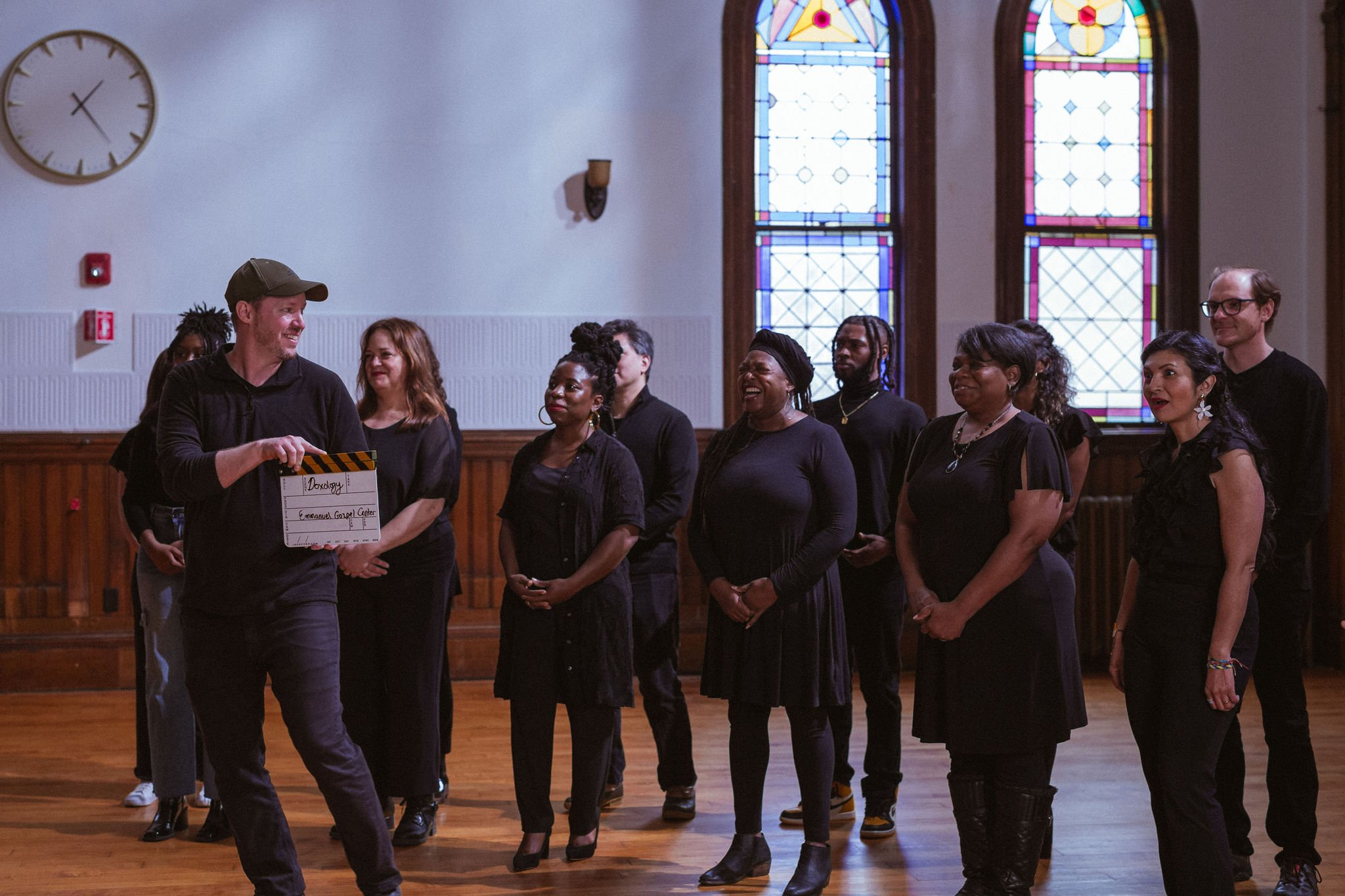
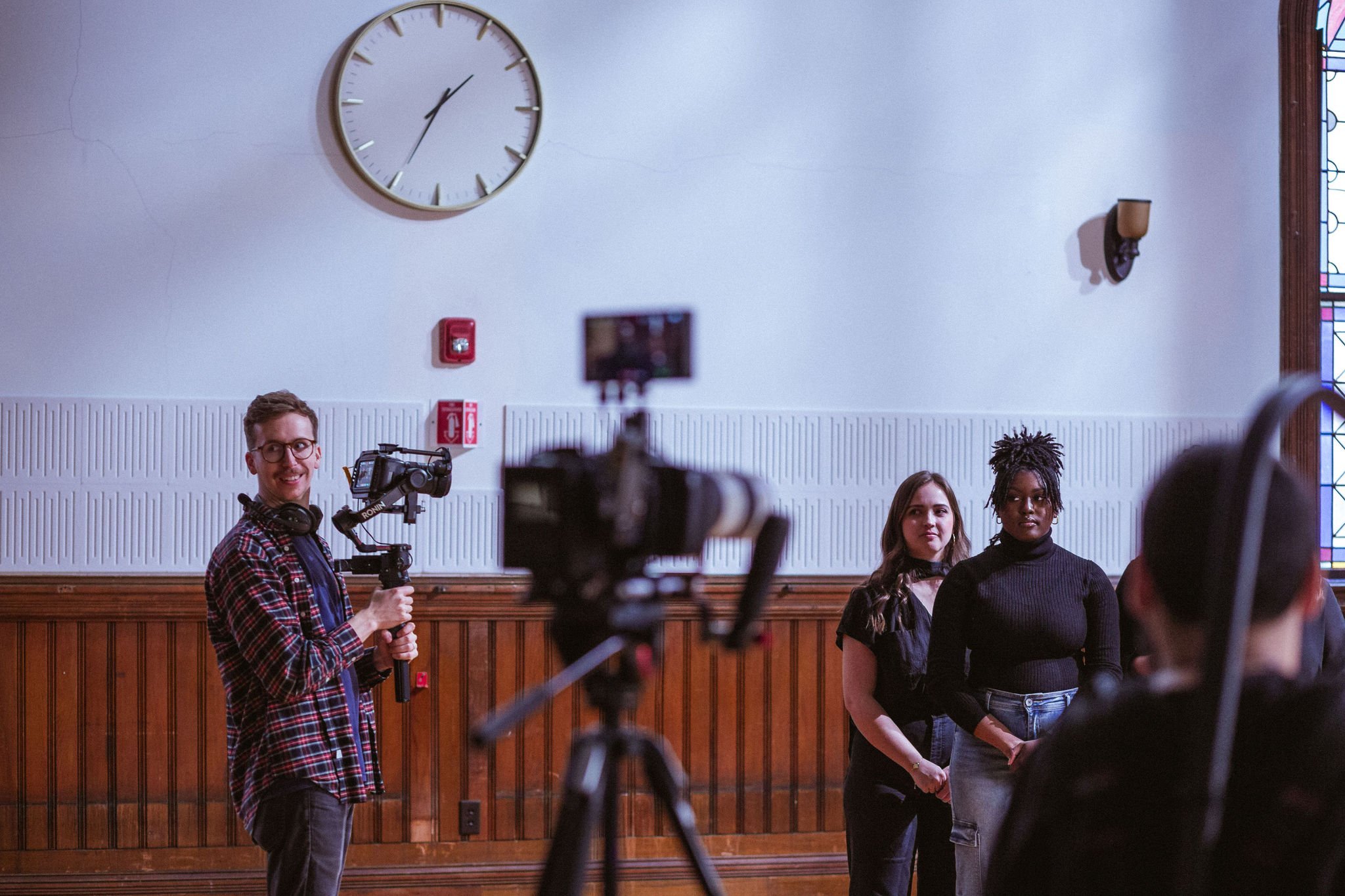
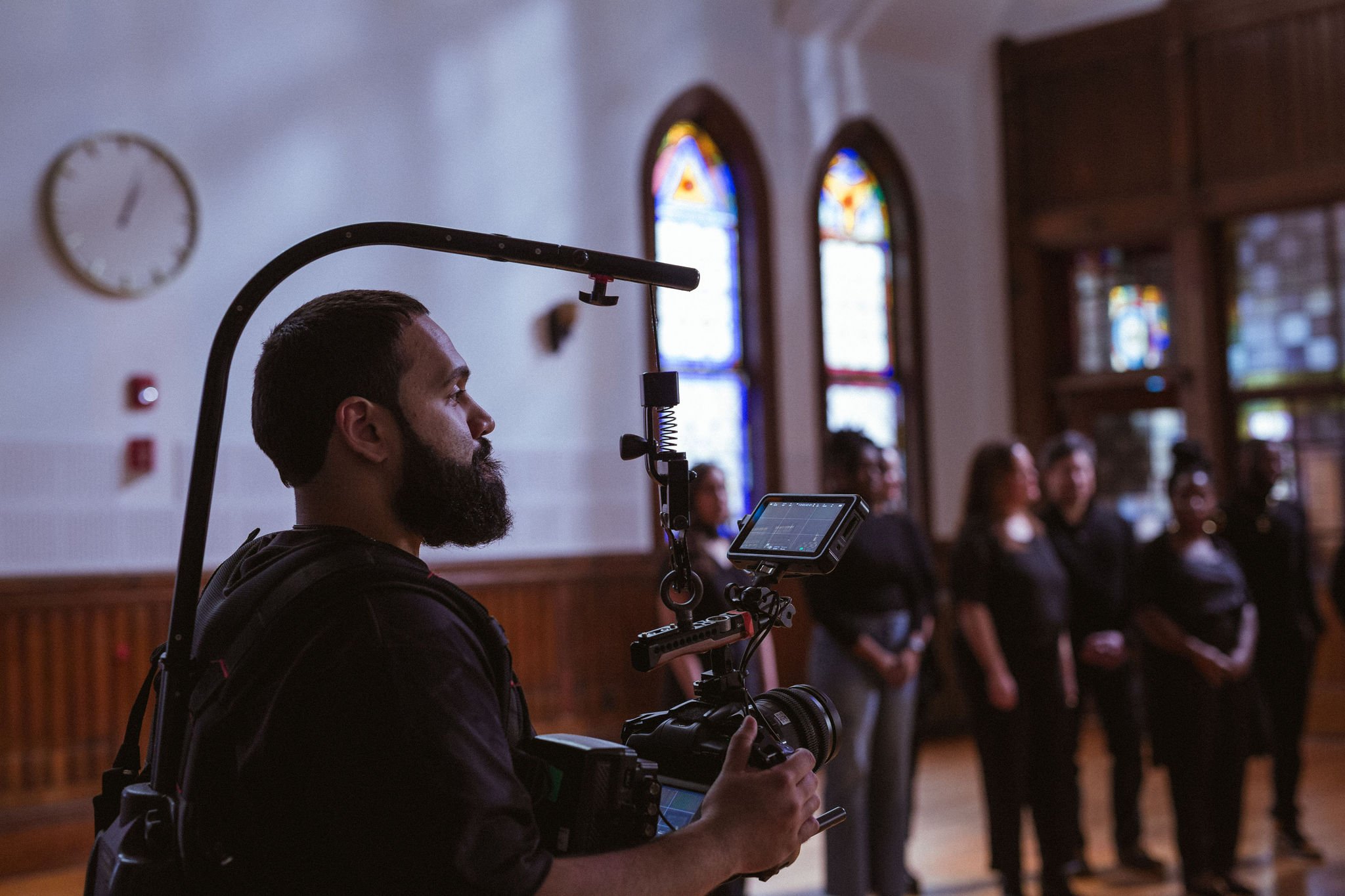
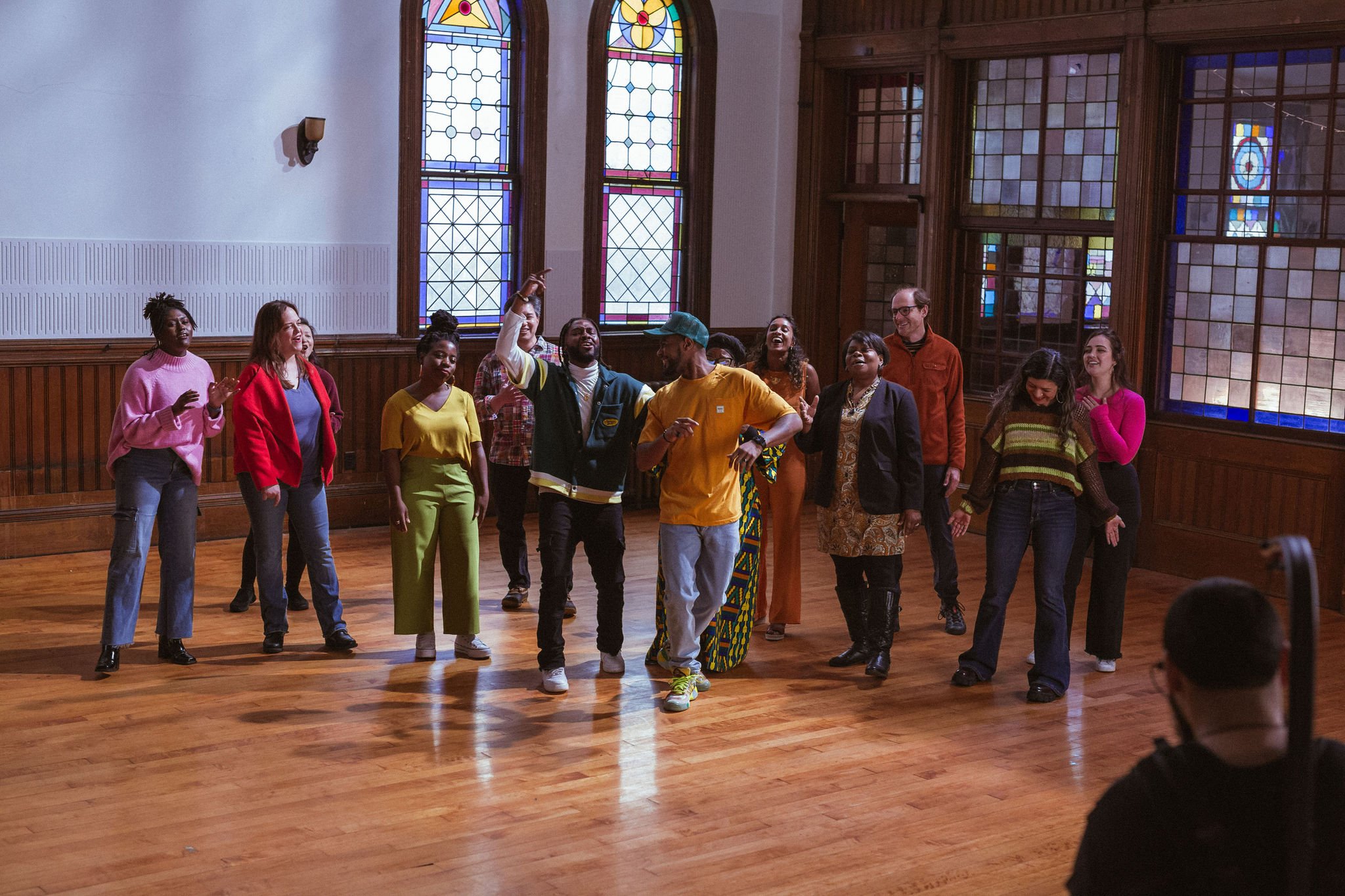
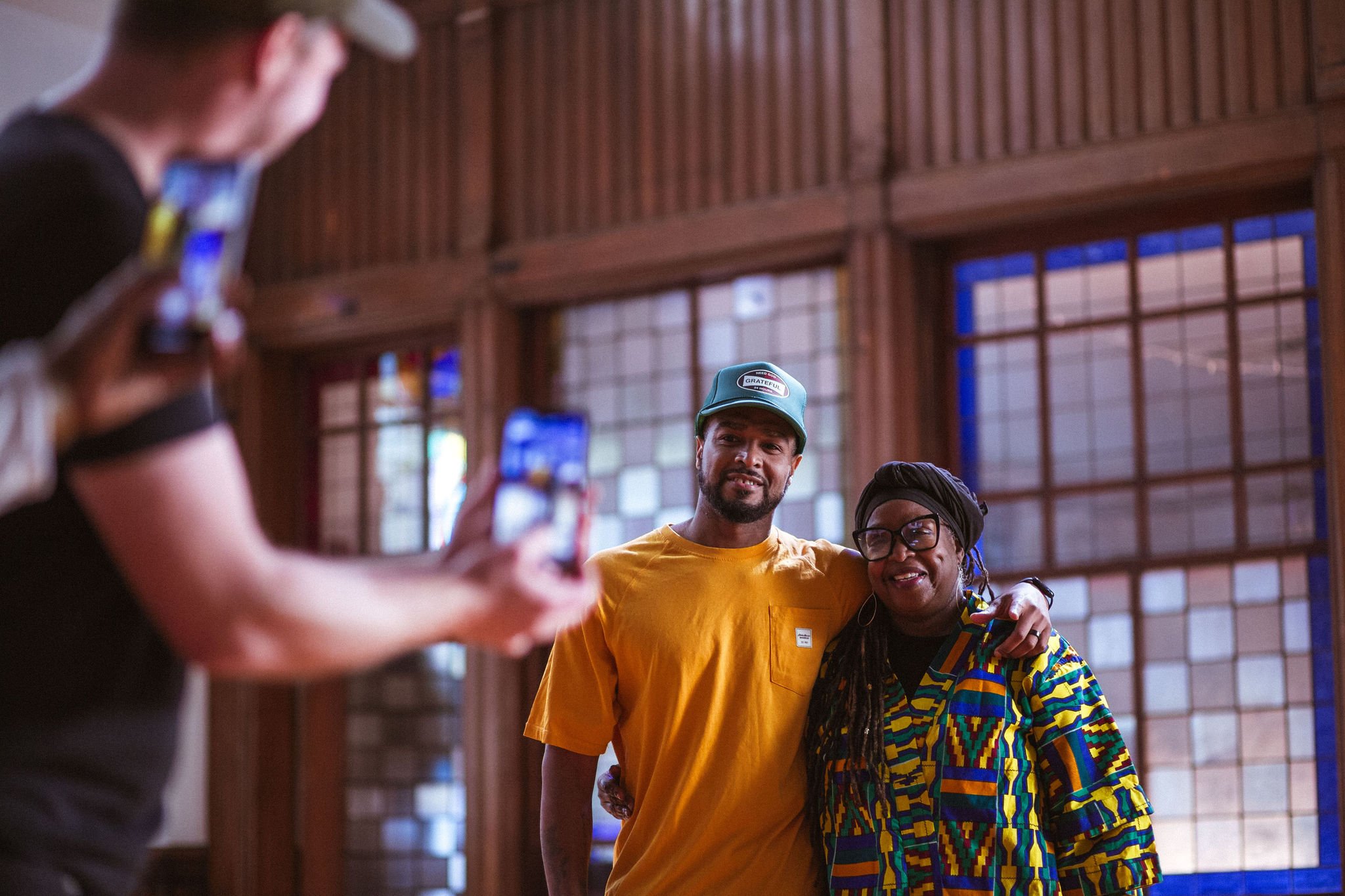
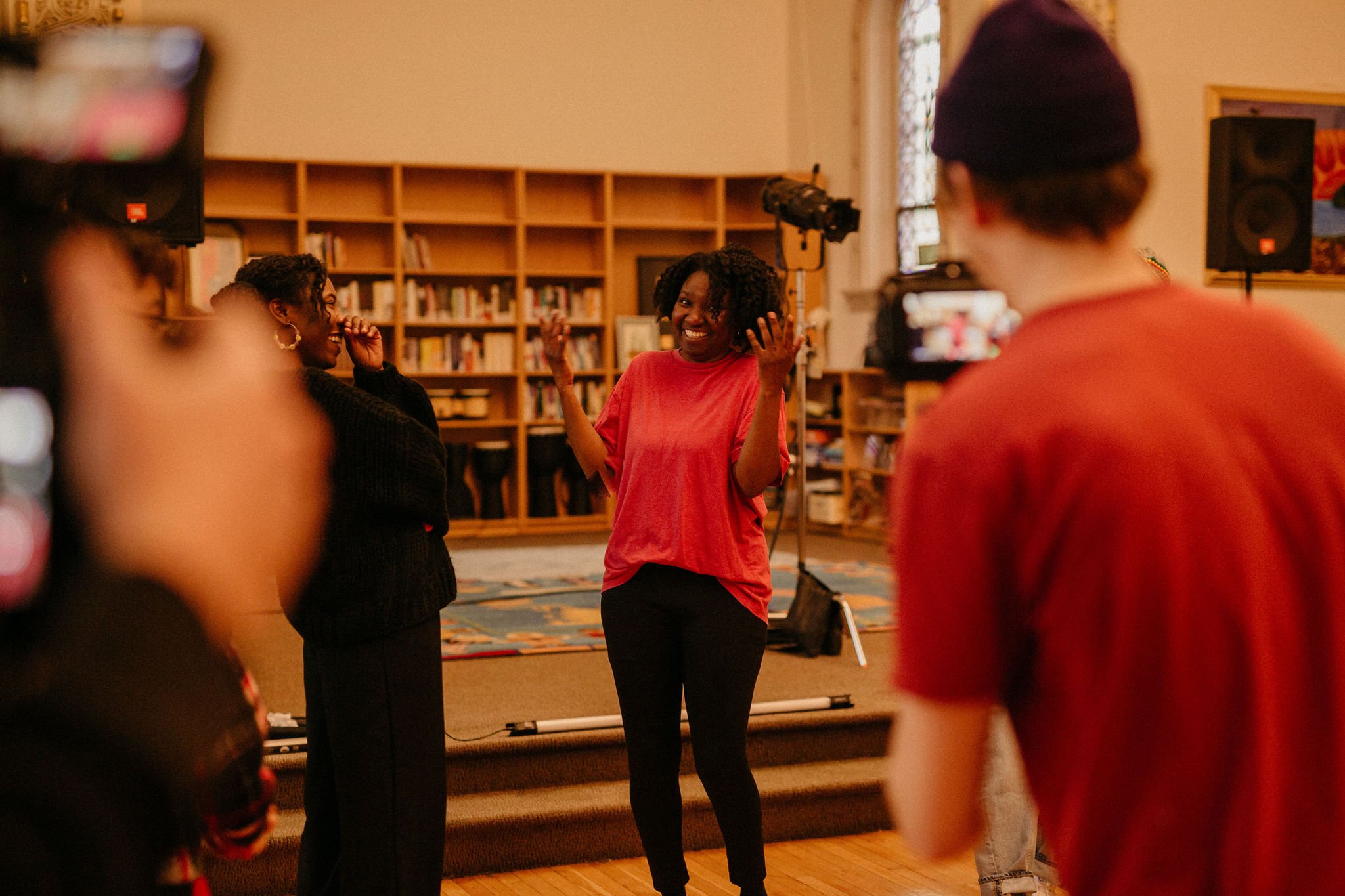
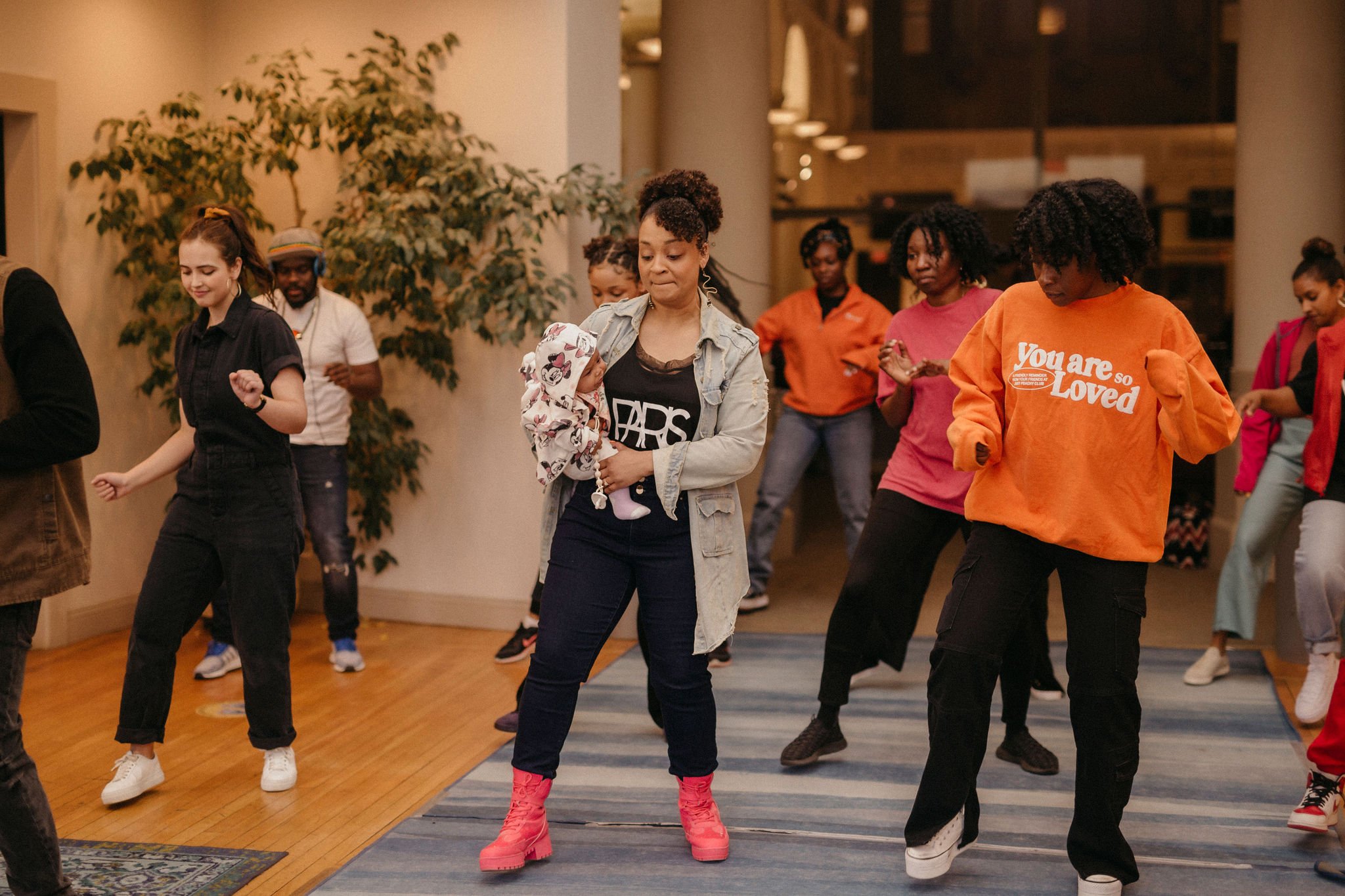

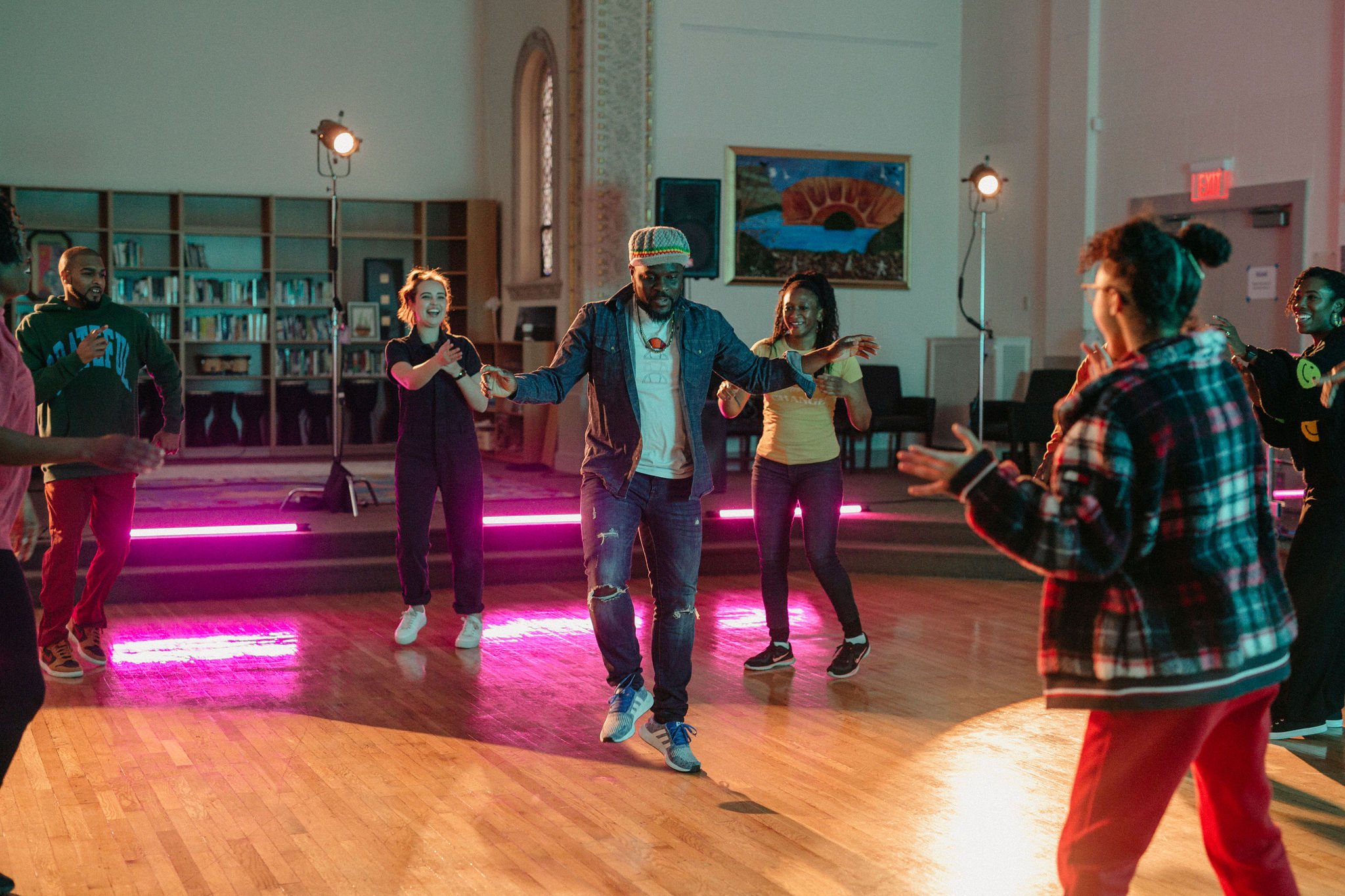
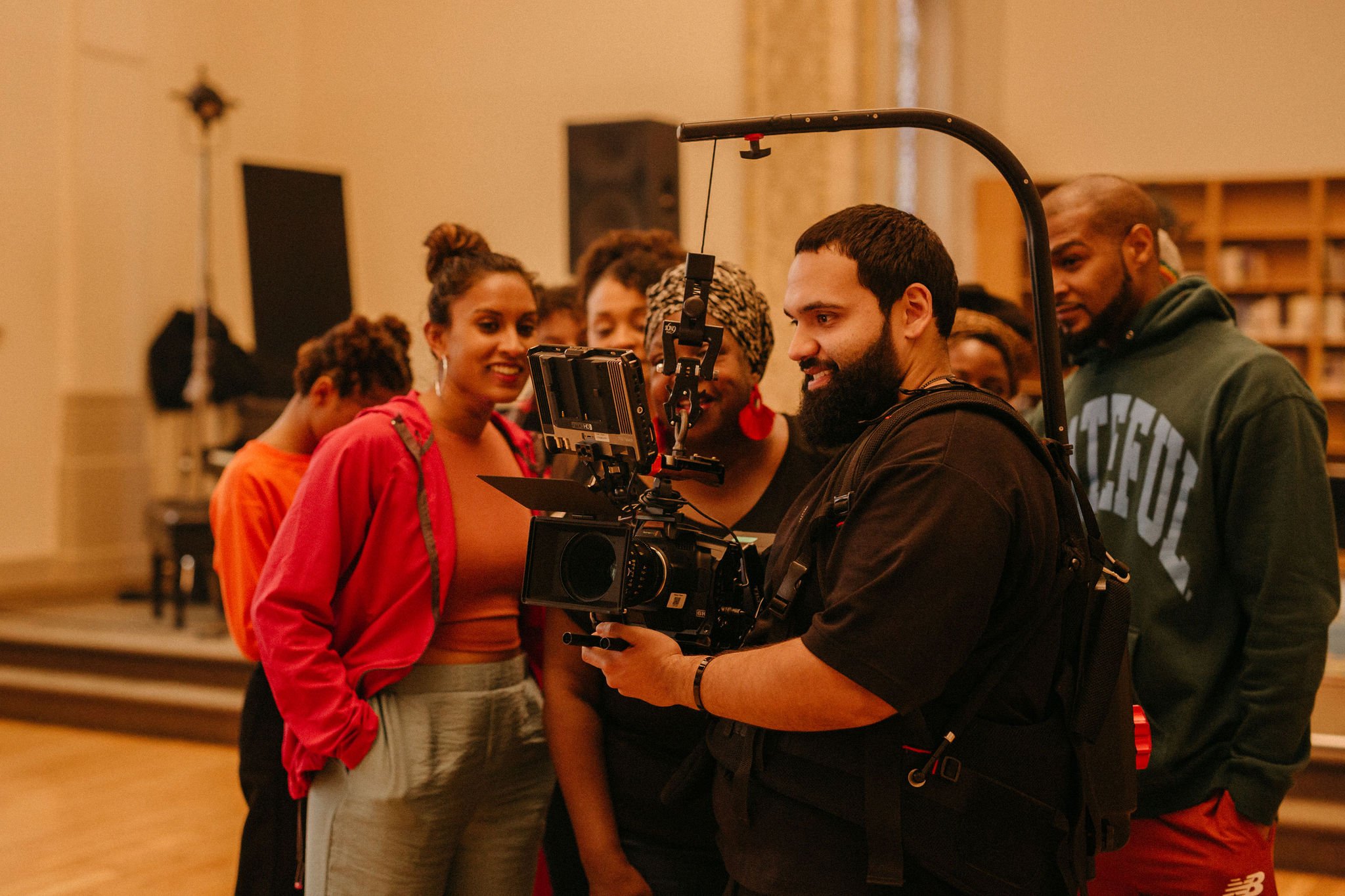
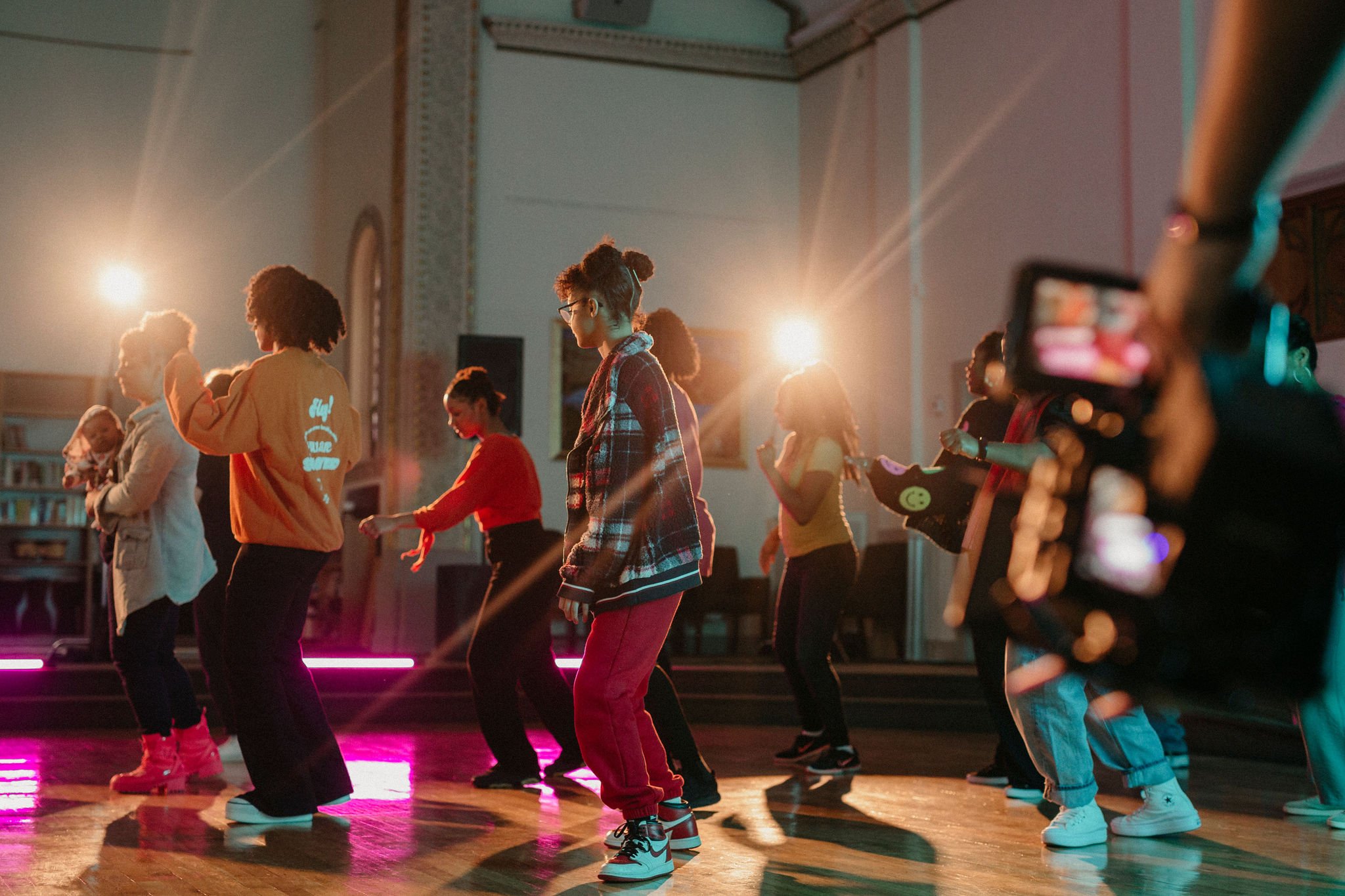



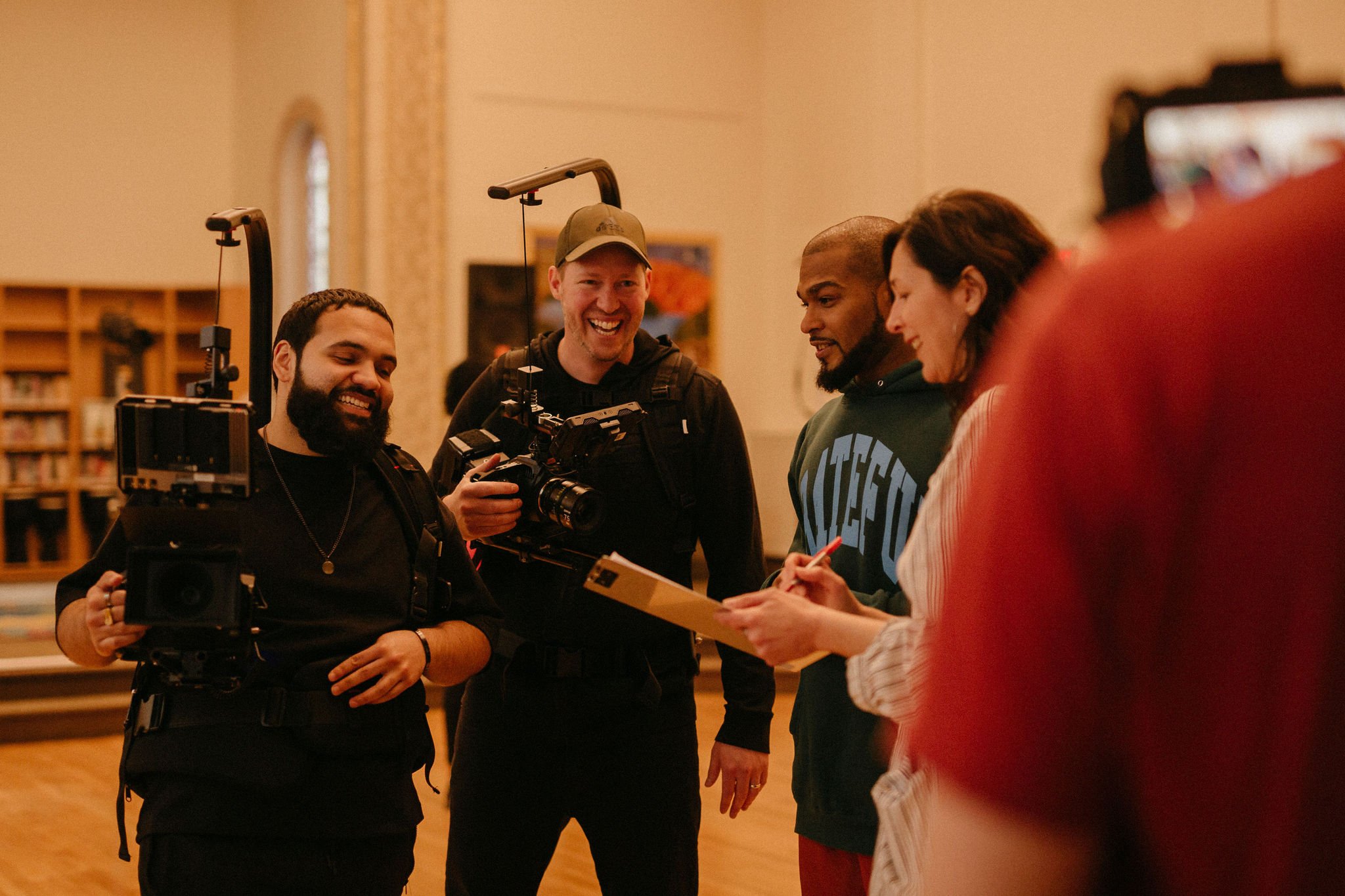
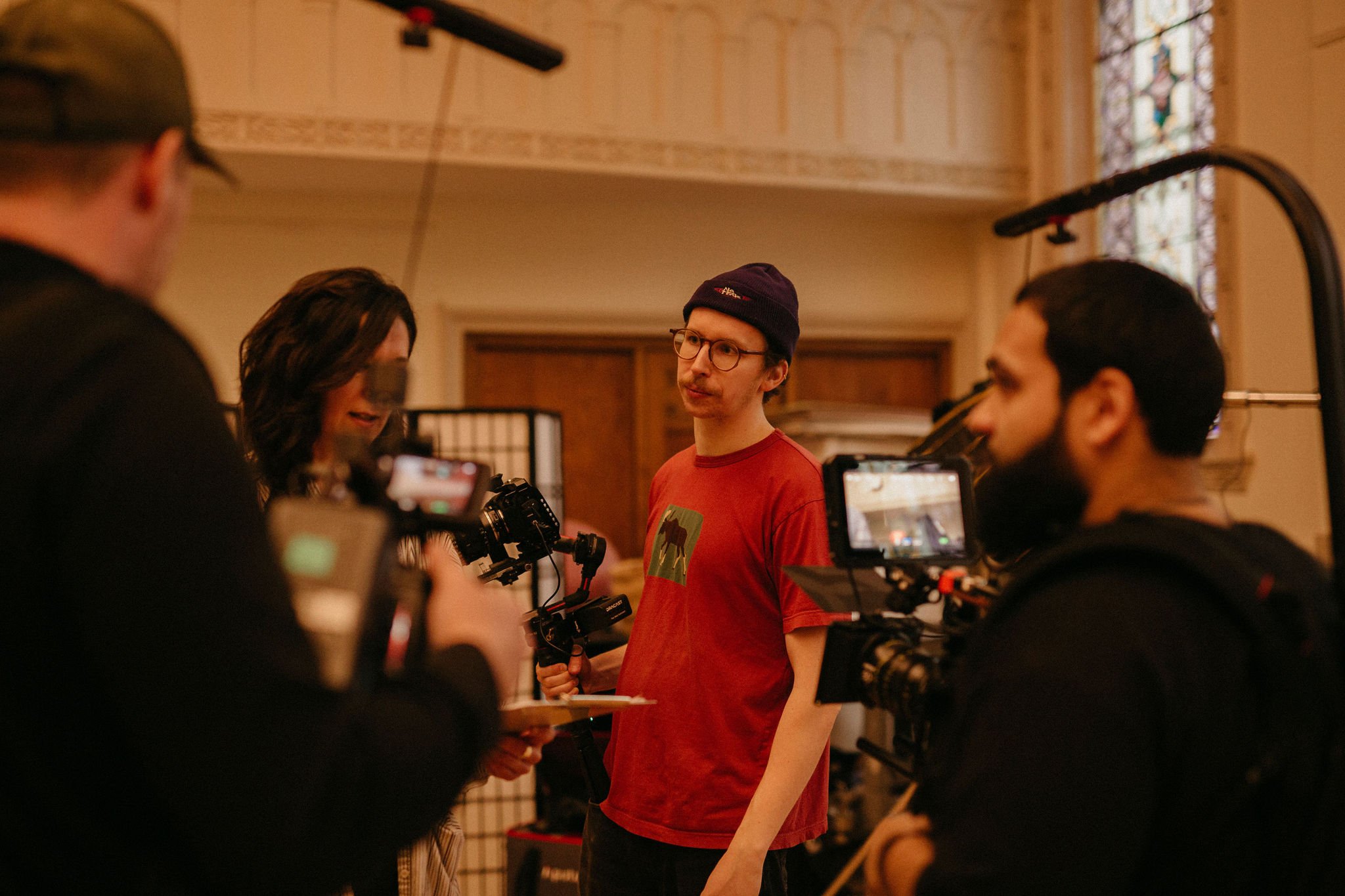


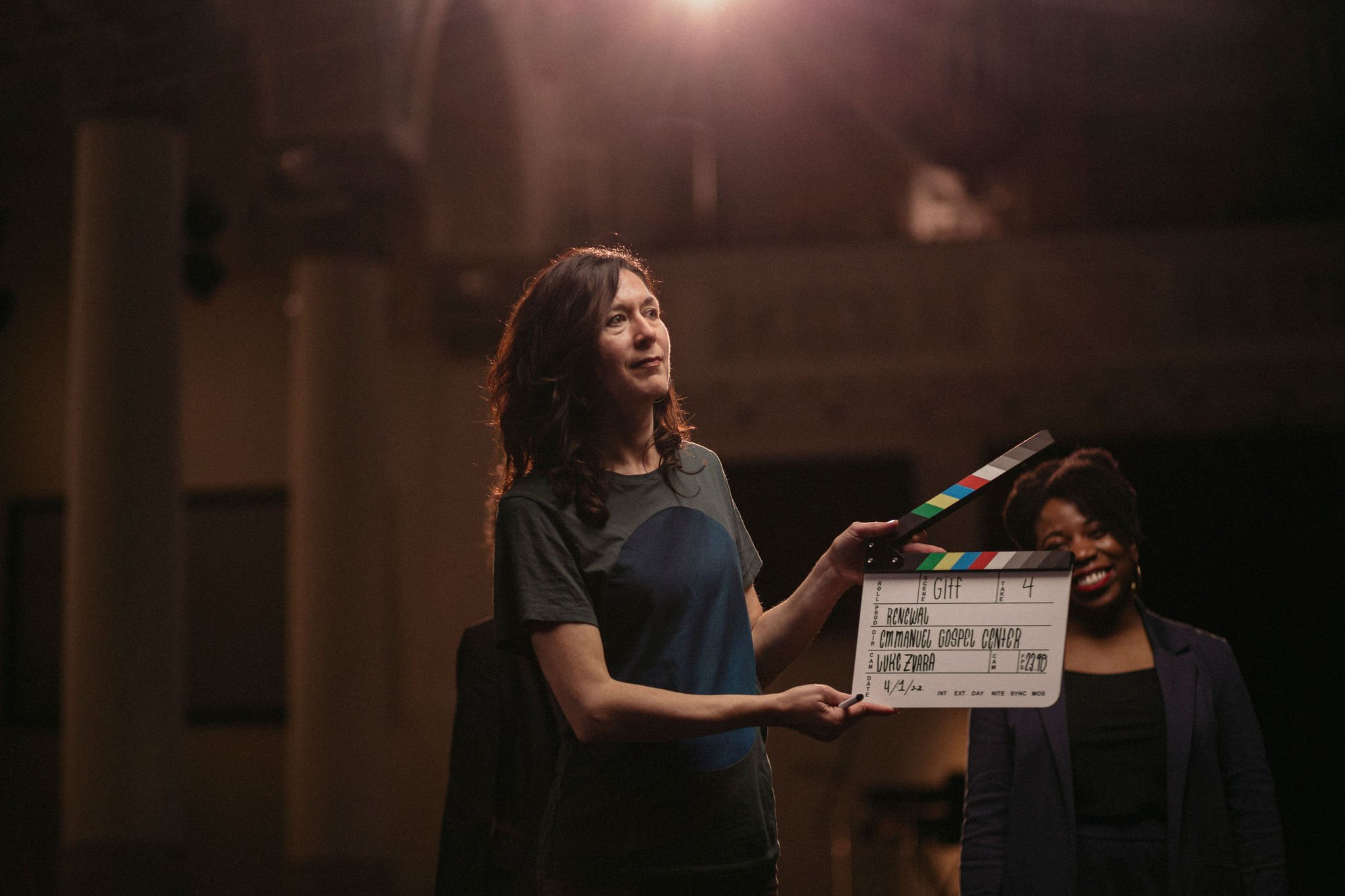

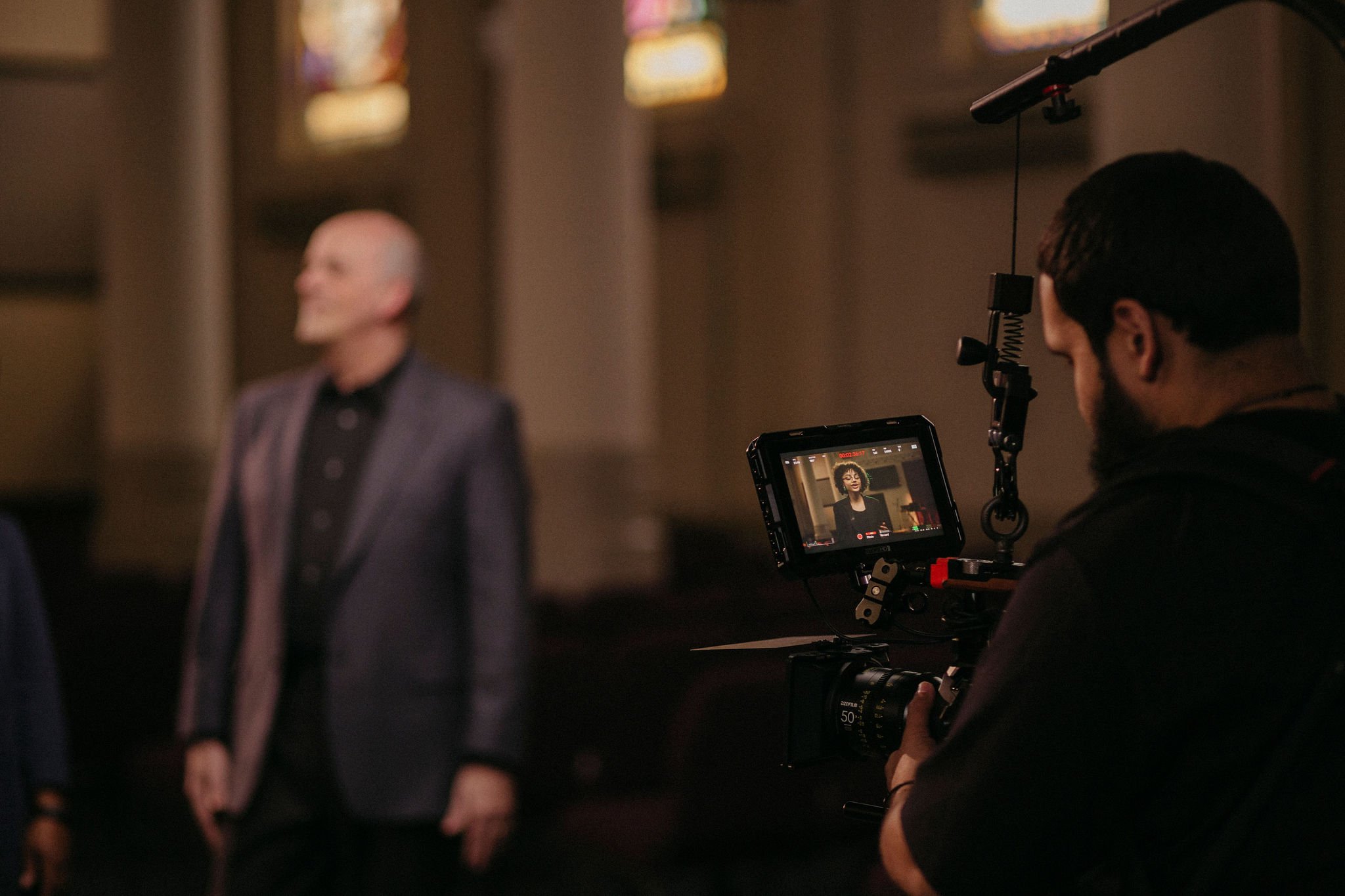
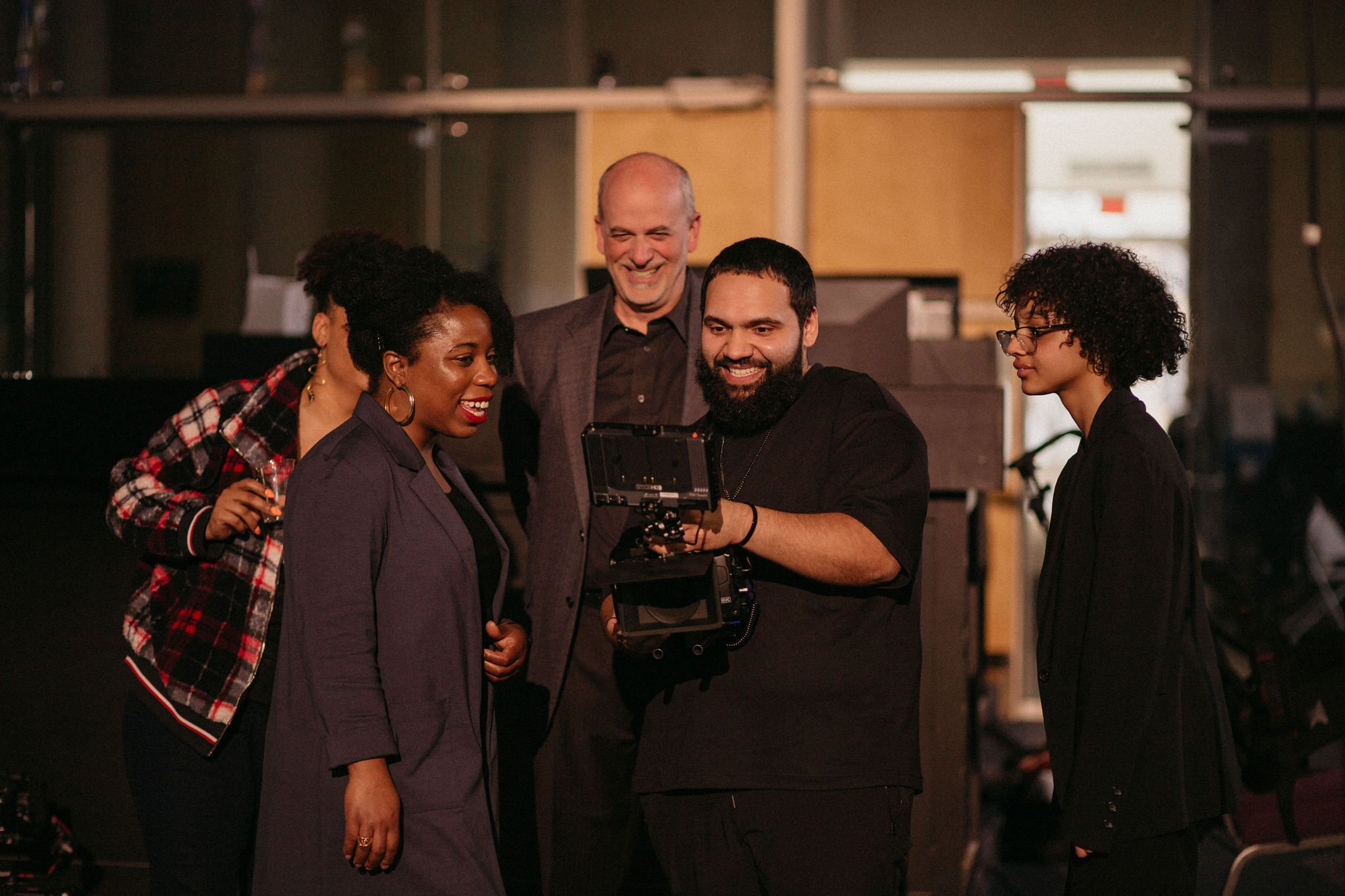
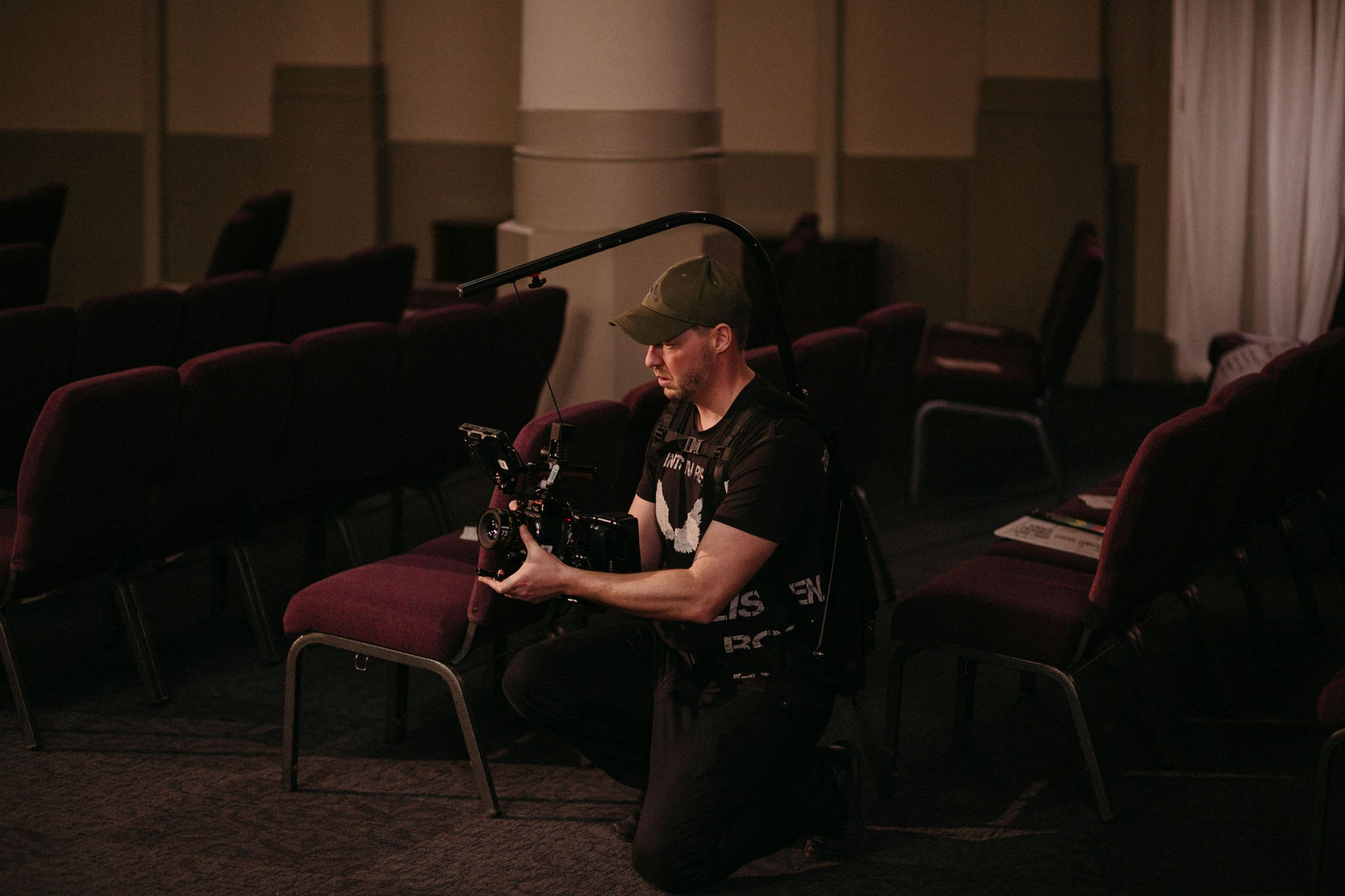
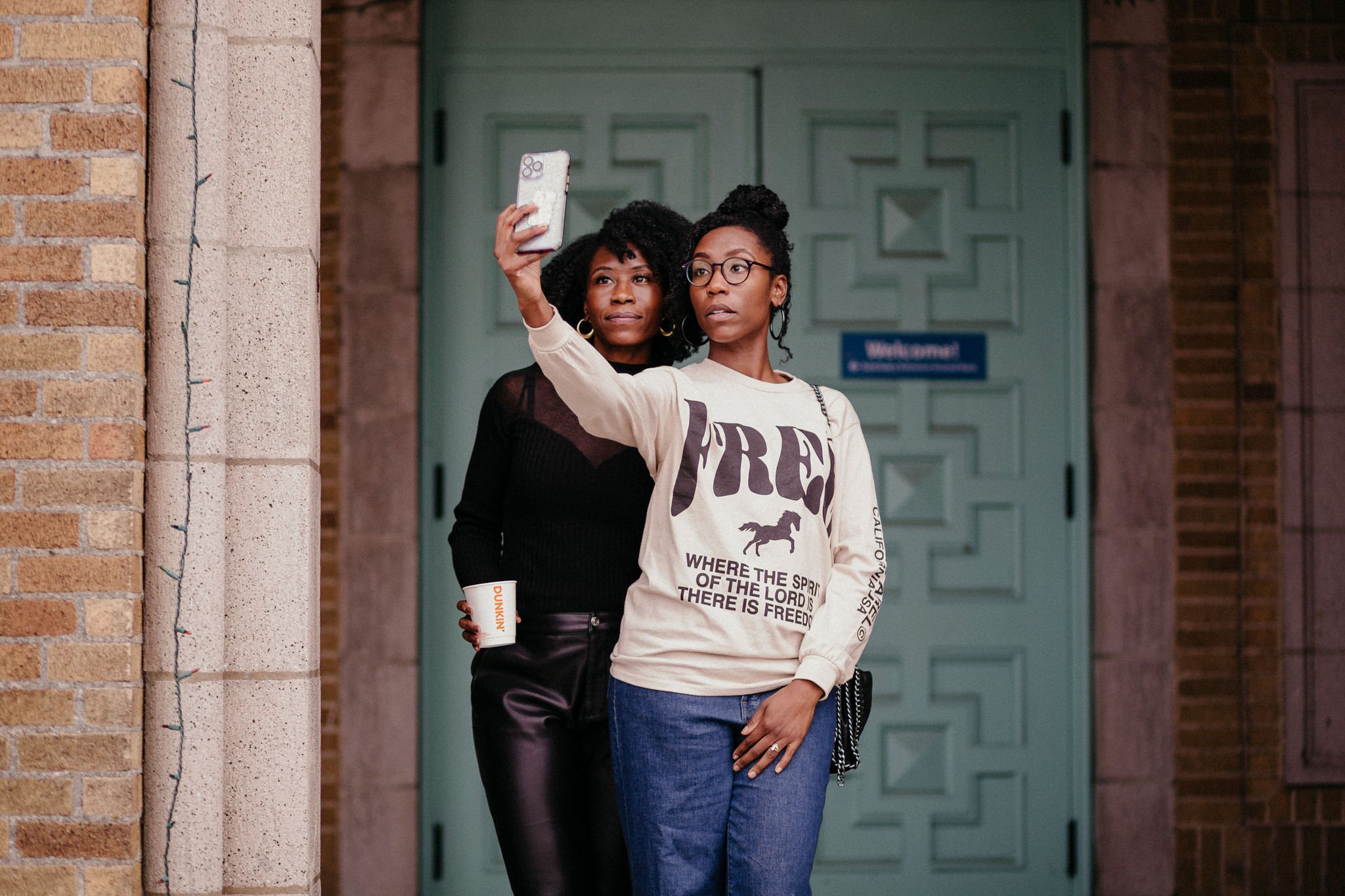


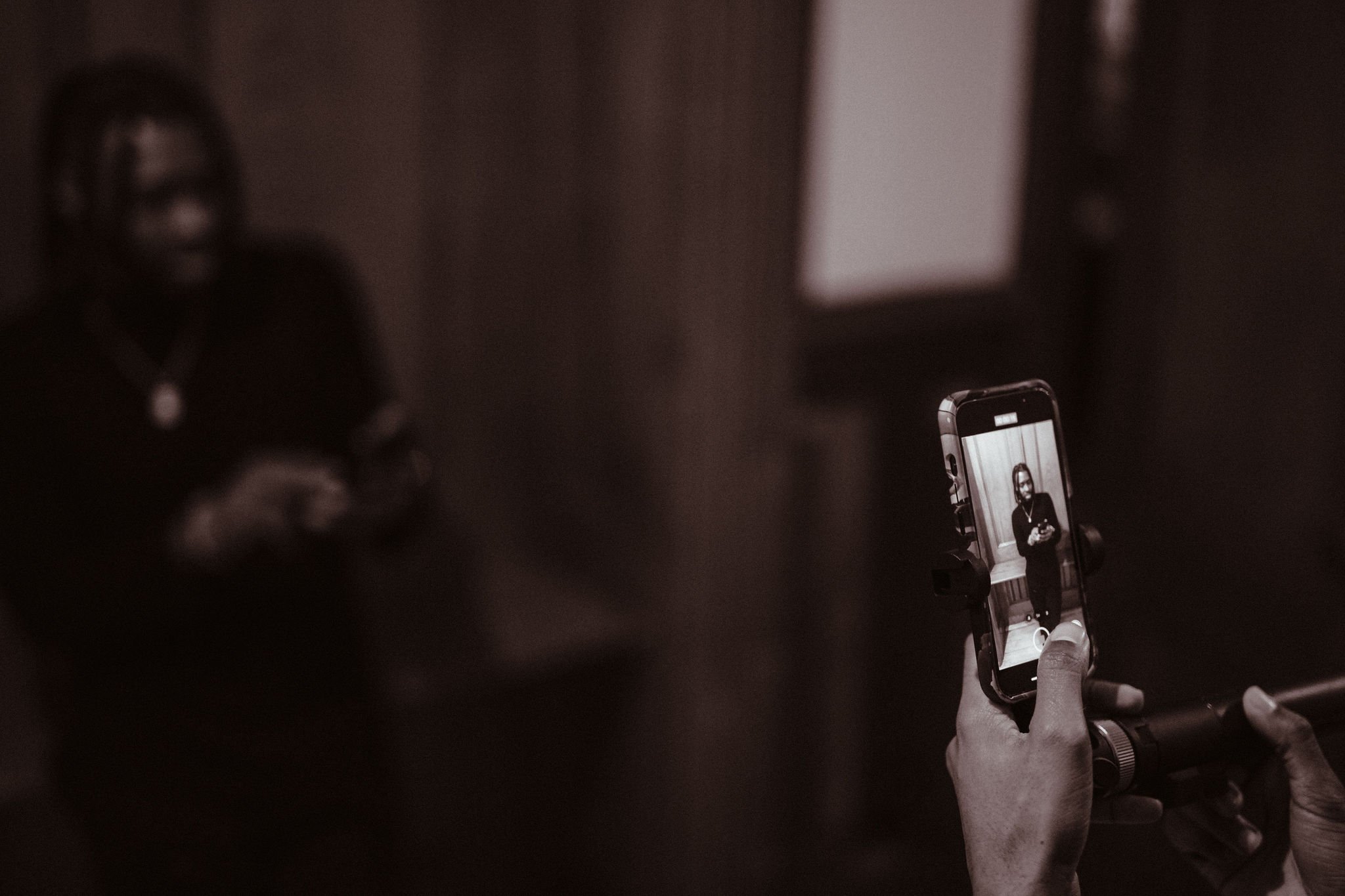
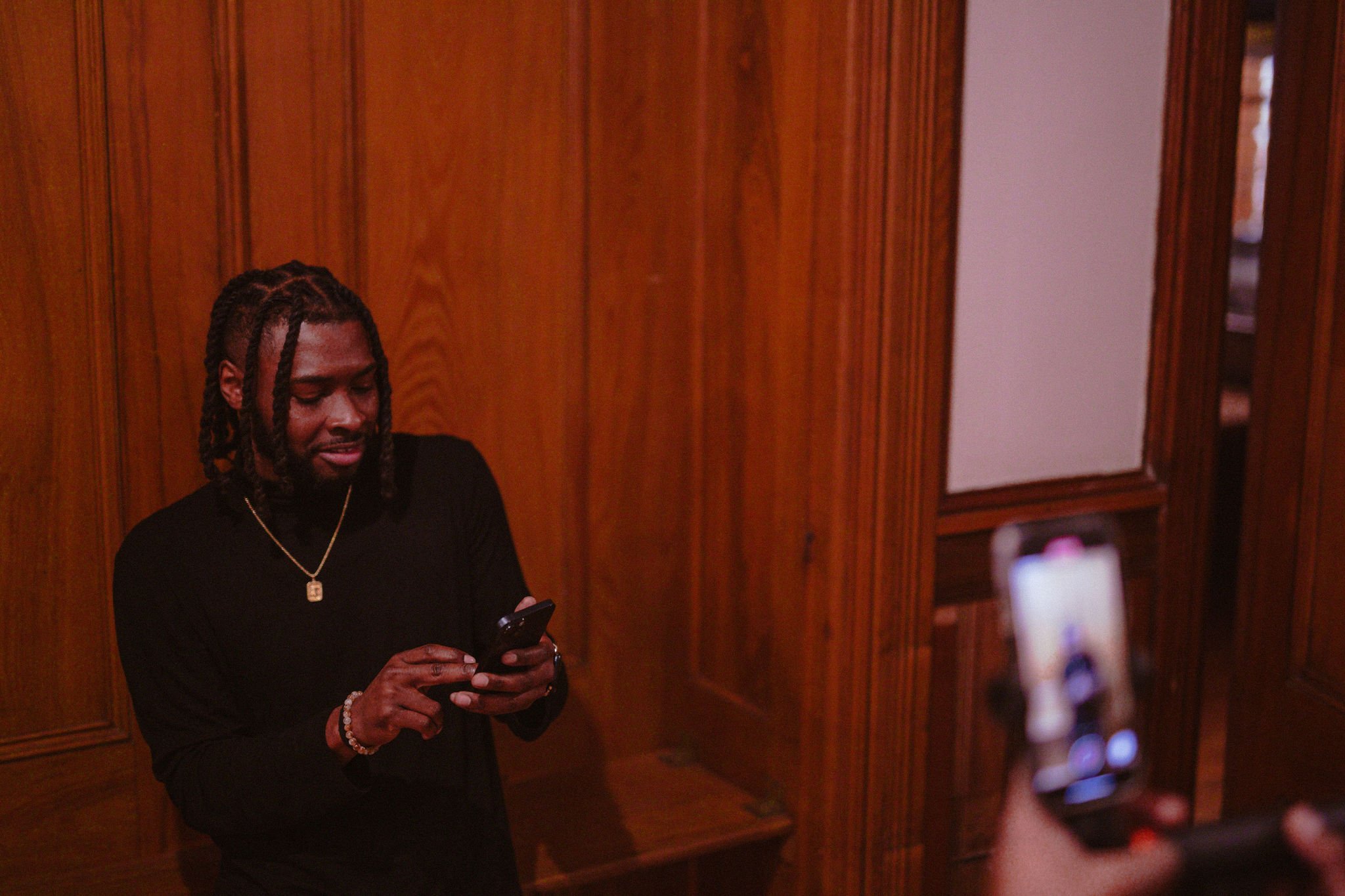

EGC film day in preparation for our annual fundraisers. Photography by Rosa Cabán at R9Foto.
Each year, we partner with different churches, which generously host us as we film content for our next fundraiser.
“It’s yet another point of connection and relationship-building that happens, where these relationships are leveraged and strengthened in the process to create something that will be a blessing beyond that moment,” says Saranya Sathananthan, researcher in residence at EGC. “Every church we’ve filmed in is aesthetically unique, and I do think that being in God’s house contributes to the quality and essence of his presence with us in the moment and in the feel of the final piece.”
Central Square Church’s historic building underwent a renovation in 2020, much like EGC’s fundraisers were remade for the pandemic era.
“Some sayin’ it’s the ending — I think it’s a new beginning.”
Originally the brainchild of Jeff Bass, EGC’s executive director, our annual fundraisers began as dinners hosted by multiple partner churches around the region.
(l-r) Hanna Garcia, Elijah Mickelson, Jalen Williams, Caleb McCoy. Photo credit: Rosa Cabán at R9Foto.
It was important to Jeff that the fundraiser not just raise funds but also advance the Center’s mission in multiple ways.
“I love that EGC’s fundraiser is missional for us,” he says. “It raises money for our work, yes, but it also invests in Christian creatives, provides a significant connecting opportunity for Christians throughout Greater Boston, and worships God by celebrating some of the ways we see Jesus at work in our city.”
Over time, we consolidated the fundraiser to one location. For several years, we held the event at Florian Hall in Dorchester or Jubilee Christian Church in Mattapan. (EGC staff members still have flashbacks of cleaning the expansive sanctuary with a household vacuum cleaner before resetting all the chairs for the next Sunday’s worship services.)
Then came the pandemic, and like everyone else, we had to pivot. Our 2020 fundraiser consisted of a single video, “Cry Out,” which included Caleb McCoy’s prophetic line, “Some sayin’ it’s the ending — I think it’s a new beginning.”
That meant rethinking our approach to content and gathering as a community.
“God has made us as individuals with different gifts that come to make up and culminate in the whole body. When we collab, we truly honor ourselves, we honor God, and we also bless others.”
Even before the pandemic, we had been moving away from presentations to embrace the diverse gifts of our staff members and ministry partners, adopting more creative content expressions.
But our next fundraiser marked a clear separation from the past. The pandemic was the first time we began working with local artists in a consistent, professional capacity, and we created a hybrid in-person and virtual concert event that resembled a drive-in movie theater experience.
Caleb, EGC’s marketing manager who wrote and performed “Cry Out,” says it’s a beautiful thing to collaborate with talented artists, dancers, filmmakers, musicians, poets, photographers, and singers.
“This has strengthened relationships among the Christian creative community, and continues to be a blessing in the city,” he says. “And to think, this largely came out of the chaos of COVID, when many artists shared the same uncertainty with their vocation and expression. It just shows how God continues to make beauty from ashes.”
Jen Aldana, singer, songwriter, and worship leader. Photo credit: Rosa Cabán at R9Foto.
For EGC staff, friends, and ministry partners, it’s a deeply meaningful experience.
“I am inspired by this unique space where filmmaking, art, and church community blend together to create something beautiful and sacred,” says Hanna Garcia, development manager at EGC.
“God has made us as individuals with different gifts that come to make up and culminate in the whole body,” says Giovanni Acevedo, poet, photographer, and filmmaker. “When we collab, we truly honor ourselves, we honor God, and we also bless others.”
“Performing and participating in EGC’s fundraiser event was an incredible blessing!” says Jen Aldana. “As a Boston-based artist, it was special to see my work come to life in a new way by creating an acoustic version of my song ‘Trust in You’ — a song about trusting in God through every season, with EGC’s vision. They stand true to their mission by incorporating the arts and empowering and uplifting others. . . It was truly a blessing to take part in.”
“As a Boston-based artist, it was special to see my work come to life in a new way.”
Each film day is a unique opportunity to connect with these artists. Saranya says she was blessed to catch up with them and hear about the latest in their lives.
Saranya Sathananthan. Photo credit: Rosa Cabán at R9Foto.
“It’s beautiful to see believers with different skills and active expressions of faith come together and contribute to something that uniquely demonstrates those talents and heartfelt stories while also reflecting a bigger picture of our amazing God and all he can do through those whose lives are surrendered to his purposes,” she says. “I left the time feeling full of joy.”
That joy sees the team through what can sometimes be a messy process of making the sausage.
“There’s a bit of chaos and feeling that spike of adrenaline, especially for those who are keeping track of the schedule, managing the equipment, and helping with all the logistics that are involved in making it happen,” Saranya says. “All these are things that you don’t really get a grasp of in seeing the final piece.”
Saranya says she’s wrestled with the filming process. It doesn’t always feel like a natural worship experience with all the bright lights and lidless, one-eyed cameras staring you down.
“But I’ve been surprised at how the Spirit often moves even in the constrained settings we often film under,” she says. “There was definitely a moment when our EGC choir was singing the Doxology together, hearing our voices magnified through the acoustics in the room, with Pastor Larry [Kim] and Laura [Mitchell] watching and singing along, that I felt like this was my sincere thanksgiving and worship to the Lord. I was grateful to be there with everyone amidst the non-stop laughter and great energy that was created together.”
As Saranya says, we hope this joyful creation and artistic expression “speak truth and encouragement to people in our collective moment and are also often timeless for those moments of needed encouragement.”
You can watch the concert anytime by subscribing to our YouTube channel.
The EGC board, staff, and friends choir at our 2024 film-day shoot. Photo credit: Rosa Cabán at R9Foto.
EGC’s (Inaugural) Shalom-Seekers Book List
Which books help you pursue the shalom of the city and the glory of God? Here are some titles that have contributed meaningfully to our shalom-seeking in Boston.
EGC’s (Inaugural) Shalom-Seekers Book List
Liza Cagua-McAllister for EGC staff
The Emmanuel Gospel Center (EGC) exists to catalyze kingdom-centered, systemic change for the shalom of the city and the glory of God. If you are also on this amazing mission, our staff recently put together a list of books that have influenced and helped us along this challenging journey!
We asked our team: What books from diverse authors have you read that have contributed meaningfully to your shalom-seeking in the urban context? Why were these books significant to you?
Submissions ranged from systems thinking primers to books on racial healing, from urban ministry classics to challenging new works less than a year old. From the 28 books mentioned by our team, we selected about a dozen to display in our EGC breakroom. Here are a few of those noteworthy titles, with staff comments.
“I find this book important for shalom-seeking in the urban context because... ”
A Multitude of All Peoples
A Multitude of All Peoples: Engaging Ancient Christianity's Global Identity by Vince L. Bantu (2020)
In order to know where we are headed, we need to know where we’ve been. Dr. Bantu — a former EGC staff member — brilliantly challenges Western mental models and makes the case for how the Church’s very foundation is multicultural.
Buried Seeds
Buried Seeds: Learning from the Vibrant Resilience of Marginalized Christian Communities by Alexia Salvatierra and Brandon Wrencher (2022)
Rev. Dr. Salvatierra and Rev. Wrencher glean powerful learnings from faith communities facing brutal challenges and evidencing tremendous power and imagination! From these historic movements, they offer present-day applications to different audiences, which is very helpful given urban shalom-seekers’ diverse experiences and social locations.
The Color of Compromise
The Color of Compromise: The Truth about the American Church’s Complicity in Racism by Jemar Tisby (2020)
Dr. Tisby offers an eye-opening and thoughtful account of how the Church has been complicit in creating and maintaining the unjust structures of systemic racism in America. This is an important book for understanding one of the key issues of our times.
Ecosystems of Jubilee
Ecosystems of Jubilee: Economic Ethics for the Neighborhood by Adam Gustine and José Humphreys III (2023)
The authors richly engage Scripture to address the relationship between justice and economics, which is so central to making things right in our world. We can’t really live out the gospel without having it reshape our economic ethics, and this is a great beginning!
Seek the Peace of the City
Seek the Peace of the City: Reflections on Urban Ministry by Dr. Eldin Villafañe (1995)
Dr. Villafañe applies the “Jeremiah paradigm” for ministry in the city, laying the biblical and theological groundwork for engaging issues such as violence and reconciliation in the city with the wisdom and truth of God’s word.
Thinking in Systems
Thinking in Systems: A Primer by Donella H. Meadows (2008)
We work in a complex web of interrelated living systems. Understanding systems is fundamental to our work, and this is the classic primer on what systems are and why they matter. It’s a great starting point or great refresher for your systems journey.
Other titles you can find in the EGC breakroom:
Beholding Beauty: Worshiping God through the Arts by Jason McConnell (2022)
Beyond Welcome: Centering Immigrants in our Christian Approach to Immigration by Karen González (2022)
First Nations Version: An Indigenous Translation of the New Testament trans. by Terry M. Wildman with consultant editor First Nations Version Translation Council (2021)
Healing Racial Trauma: The Road to Resilience Paperback by Sheila Wise Rowe (2020)
I Bring the Voices of My People: A Womanist Vision for Racial Reconciliation by Chanequa Walker-Barnes (2019)
The Alternative: Most of What You Believe About Poverty is Wrong by Mauricio Miller (2017)
The Anatomy of Peace: Resolving the Heart of Conflict by The Arbinger Institute (2006)
Come by EGC to borrow one of these copies, check them out at your local library, or purchase them at your local, independent bookstore through bookshop.org!
These books help us pursue the shalom of the city for the glory of God. How about you?
The Value and Relevance of Community Research
In-depth research helps us go below the surface.
Photo credit: Andrew Holzschuh via Lightstock
The Value and Relevance of Community Research
By Rudy Mitchell, Senior Researcher
Why research our communities when we can simply talk to people or make casual observations?
In-depth research helps us go below the surface. There we discover the root causes of problems, hidden needs, or little-known assets and resources.
Research provides a broader understanding of the various trends or forces impacting our communities. With this greater awareness, Christians can more effectively minister in their communities or start new ministries.
Community research lays a foundation for community transformation and effective witness.
This presentation is part of the larger series, Community Research and the Church. For earlier segments, click here.
The Nature of Community Research
What is community research?
Photo credit: Sam Ramsey via Lightstock
The Nature of Community Research
By Rudy Mitchell, Senior Researcher
Communities are complex social systems made up of people interacting with each other within a local area. The geographical context can be as small as a neighborhood or as large as an entire region.
As we learned in the first part of the Community Research and the Church series, community research includes various tools to learn more about your neighbors and community.
Community research is the systematic, careful study of a group of people who have common ties and social interactions, as well as the local area in which they live or interact.
How does this square with our Christian faith? God’s revelation provides a perspective on the world that informs our study of communities and culture. This biblical and theological research combined with community research helps us apply biblical principles and develop practical ministries in the church and community.
This presentation is part of the larger series, Community Research and the Church. In the next segment, we explore the value and relevance of community research.
Ministry With Eyes Wide Open: The Varied Lenses of Community Research
From community-based participatory research to social-network analysis, there are various ways Christians can learn more about the communities they serve.
Photo credit: Hamilton Photography via Lightstock
Ministry with Eyes Wide Open: The Varied Lenses of Community Research
By Rudy Mitchell, Senior Researcher
Are you seeing all that can be observed about your community?
From community-based participatory research to social-network analysis, there are various ways Christians can learn more about the communities they serve.
In this presentation, we explore several approaches to community research:
Spiritual and religious assessment
Historical-research approach
Demographic approach with mapping
Community-based participatory research
Assets-based approach
Needs-assessment approach
Community-indicators approach
Leadership studies and stakeholder analysis
Case studies of organizations and best practices
Social-network approach
Systems-analysis approach
A number of these approaches can be used as part of an overall community-building or community-development process that leads to community transformation.
This presentation is part of the larger series, Community Research and the Church. In the next segment, we explore the nature of community research and how it relates to biblical research and Christian ministry.
Community Research and the Church
A Christian church or ministry functions in the context of a particular community. To effectively minister in that community, it’s important to understand it.
Photo Credit: Athena Grace via Lightstock
Community Research and the Church
by Rudy Mitchell, Senior Researcher
A Christian church or ministry functions in the context of a particular community. To effectively minister in that community, it’s important to understand it.
There are various ways Christians can learn more about the communities they serve. Community research provides us with the tools to go below surface observations. It lays a foundation for community transformation and effective witness.
In this series, we explore several facets of community research: different approaches, its nature, and its value and relevance to the church.
Illustrated Guide for Researching Your Community
From population trends to social needs, this illustrated guide lists the factors to consider when learning more about a local neighborhood or community.
Photo credit: Boston Heath via Lightstock
Illustrated Guide for Researching Your Community
by Rudy Mitchell, Senior Researcher
Click here for a template of a community research guide.
Community or Neighborhood Name:
Community geography
Clearly identify the boundaries of your community (geographical, political).
Identify the U.S. Census tracts of the community (unless you are covering a large area) or identify other defined areas used in population or demographic surveys.
Describe the main geographical features of the neighborhood or community. Describe any other basic defining characteristics or features. What key features (rivers, hills, waterfront, railroad, etc.) influence or define the nature and boundaries of the community?
Create or obtain a detailed map of the neighborhood or community. Add boundaries and use the base map to add other items of interest such as churches, schools, social service organizations, landmarks, cultural organizations, neighborhood associations, recreational facilities, and other resource assets. Separate maps can be created for different types of resources or institutions. You can also do this using layers in digital maps. You can use Google My Maps to create and share online maps. See google.com/mymaps. Another online option is to create a map in Harvard World Map, worldmap.harvard.edu, or Open Street Map, openstreetmap.org.
Grove Hall Boundaries and Census Tracts
Map of neighborhood churches
Examples of maps in a community study.
Map of Organizations and Programs in a Neighborhood
Key to map
Maps of schools, churches, and other institutions can be created, or these can be combined using symbols into one map.
Hawthorne Grove, the Marshall P. Wilder Estate
Community History
Research the community’s history using primary and secondary sources, as well as oral history interviews. Aspects of community history may include biographical information on significant people; the history of the built environment; the history of religious and cultural organizations; economic and political history; and the history of ethnic, racial, and social changes. The history can be presented in narrative form supplemented with maps, charts, and visual illustrations.
Old Blake House, Edward Everett Square, Dorchester
Overall population and population trends
What is the current total population of the community or neighborhood?
What overall population trends have occurred in the last several decades? Include earlier data if available. Explore possible reasons related to the changes and possible future trends.
| Decade | 1990 | 2000 | 2010 | Latest |
|---|---|---|---|---|
| Total population | ||||
| % change from previous decade |
[The formula to find the % change is (B-A) /A x 100 =. Say the 1980 population (A) is 1,000 and the 1990 population (B) is 800. To find the % change from 1980 (A) to 1990 (B), begin on the calculator with B (800) and subtract A (1,000) then divide that by A (1,000) x 100, and then hit =. You should get -20. You can add the % sign to -20. The % change from A (1,000) to B (800) is -20%.] Source:
Example of a line graph showing the population trend for a neighborhood study.
Ethnic and Racial composition and trends of the community
Fill out this table for the major ethnic and racial groups in the community. (You may expand the table if you would like to include more groups, or you may combine smaller groups into an “Other” category.) Separate tables can be created for each census tract or for specific nationalities within the Hispanic group. Graphs and maps may also be used to visualize trends and changes. If the community has other nationalities and ethnic groups not listed in your table, you can list and describe them separately. Describe any intercultural or inter-racial tensions that exist. Summarize your observations and analysis of population trends.
| Name of group (ethnic group, racial group etc.) | 2000 | 2010 | Latest | |||
|---|---|---|---|---|---|---|
| pop. of group | % of total pop. | pop. of group | % of total pop. | pop. of group | % of total pop. | |
| 1. | ||||||
| 2. | ||||||
| 3. | ||||||
| 4. | ||||||
| 5. | ||||||
| Total pop. | 100% | 100% | 100% | |||
The formula to find the percent is: A/Total x 100 =. Say there are 2,000 people (total) in your community, and 250 (A) are Hispanic. Put 250 (A) on your calculator, and divide by 2,000 (total) and multiply by 100 = 12.5. You can add the percent sign to your answer because you multiplied by 100. 250/2,000 x 100 = 12.5% of the people in your community are Hispanic. (Make sure your percentages total 100%.) Source:
From this table, how has the ethnic and racial composition of the community changed in the last few decades? Summarize your observations and analysis of population trends.
Describe any intercultural or inter-racial tensions that exist.
Example of a graph showing racial trends in a neighborhood.
Languages spoken and Linguistic Isolation
What languages are spoken in the community? Provide numbers per language.
What number and percentage of the population are linguistically isolated? ( A household is linguistically isolated if all members 14 years and older speak a non-English language and they speak English less than “very well.”) Of those who are linguistically isolated, what percentages speak various languages other than English? What percentage of the population over 5 years speaks English less than “very well?”
What are the age characteristics of the community’s population?
Complete the following table to reveal any important differences between the age profile of the church, community, and nation. Use your personal estimate or ask your pastor for the church data. (Figure the percentages and make sure they add up to 100.) Do the percentages differ significantly between the church, the community, and the nation?
| Age category | Your church | Community | Nation | |||
|---|---|---|---|---|---|---|
| Number | % | Number | % | Number | % | |
| 0-4 years | ||||||
| 5-9 years | ||||||
| 10-19 years | ||||||
| 20-34 years | ||||||
| 35-64 years | ||||||
| 65+ years | ||||||
| Total | 100% | 100% | 100% | |||
The formula to find the percent is A/Total x 100 =. Say there are 200 people (total) in your church, and 25 (A) are youth. Put 25 (A) on your calculator, and divide by 200 (total) and multiply by 100 = 12.5. You can add the percent sign to your answer because you multiplied by 100. 25/200 x 100 = 12.5% of your church are youth.
What is the current median age of the population? Compare this with the median age of the nation, state, and larger city, or metropolitan area. Compare median age differences between different races in the community (and between the Hispanic and non-Hispanic populations).
Observe more specific characteristics of the teenage and young adult populations, such as the racial and ethnic composition. Break down the age groups by single years.
Which generations are represented in significant numbers in your church? Is one generation dominant?
Baby Boomers, born 1946-1964
Generation X, born 1965-1980
Millennials, born 1981-1996
Generation Z, born 1997-2012
Examples of graphs showing age profiles and comparisons of a neighborhood.
Family Characteristics and Marital Status
What is the average household size in the community? What is the average household size in the individual census tracts or subsections of the community? Observe any variations and also compare with the metropolitan area, state, and nation.
What are the numbers and percentages of the population (over 15 years) in your community who are:
| Marital status | Number | % |
|---|---|---|
| Now married (except separated) | ||
| Single (never married) | ||
| Separated | ||
| Divorced | ||
| Widowed | ||
| Total population (over 15 years) | 100% |
Source:
What percentage of families consist of (Compare to total population: A/total x 100 = %)
Married couples with children (under 18 years)? %
Married couples without children (under 18 years)? %
Households
What is the total number of households?
What percentage of households are family households?
What percentage of households are non-family households?
How do these percentages compare with the state and national percentages?
How many family households have children under 18 years?
How many of these family households with children under 18 are female-headed with no male spouse present?
How many of these family households with children under 18 are male-headed with no female spouse present?
What number and percentage of family households with children under 18 are single-parent households?
Number:
%:
What percentage of children under 18 years living in households, lived with
Grandparents:
Other relatives:
Non-relatives:
Economics and Income
Poverty
What percentage of the population is living below the poverty level?
What percentage of youth age 18 and under are living below the poverty level?
What percentage of youth ages 12-17 are living below the poverty level?
Families: What is the total number of families? What is the number of families living below the poverty level? What percentage of families live below the poverty level?
Comparisons: How do the percentages above compare with the city, state, and national percentages? Do some parts of the study area have higher rates of poverty than others?
Income
What is the median family income in this community?
What is the mean (average) family income in this community?
| 2000 | 2010 | Latest | |
|---|---|---|---|
| Community | |||
| Metropolitan area | |||
| State | |||
| Nation |
Trends
Has the general income of the community changed significantly relative to wider trends? (Middle income to lower income, or gentrification, etc.)
EMPLOYMENT
Major employers or types of employers in the community?
What is the present rate of unemployment? %
Have there been any changes in the type of employment, location of employment, or unemployment rates?
Education
Highest level of education: What percentage of all persons over 25 years old have
Less than high school?
High school?
Bachelor’s degree?
Master’s degree or higher
How do these percentages compare with the national and state percentages?
Example of a graph comparing educational achievements.
What is the current event drop-out rate for any high schools in the community?
Research the elementary and secondary educational institutions in the community.
List and describe each school. Provide any statistical data available.
List any postsecondary educational institutions and their enrollment.
Jeremiah Burke High School
Housing
What are the major housing types in the community based on your observation? (High-rise apartments or public housing; single-family detached houses, rowhouses, duplexes, triple-deckers, etc.)
What percentage of the housing units are owner-occupied? % (Compare to total)
What percentage of the housing units are low-income or affordable? % (Compare to total)
What is the median housing value for the community? For the nation?
Is the housing value increasing, decreasing, or stable?
What are the current typical monthly rental costs for a
Studio:
One-bedroom:
Two-bedroom:
Or more bedrooms
What housing needs and problems does the community have?
Recreation
List any important recreational facilities and activities in the community:
Source:
Community events
List major community events that occur annually or regularly:
Source:
Organizations
List any major community organizations, neighborhood associations, clubs, social, political, or educational groups:
Source:
Media
How are events in the community publicized?
Is there a community newspaper?
Source:
Social Needs
List any important Social Service Agencies and their services:
Source:
List three social needs that are not being effectively met by these groups.
Source:
What are the major crime concerns in the neighborhood?
Source:
Click here for a template of a community research guide.
Guide for Researching Your Community
From population trends to social needs, this guide lists the factors to consider when learning more about a local neighborhood or community.
Photo credit: JYount Photo via Lightstock
Guide for Researching Your Community
by Rudy Mitchell, Senior Researcher
Click here for an illustrated guide to researching your community.
Community or Neighborhood Name:
Community geography
Clearly identify the boundaries of your community (geographical, political).
Identify the U.S. Census tracts of the community (unless you are covering a large area) or identify other defined areas used in population or demographic surveys.
Describe the main geographical features of the neighborhood or community. Describe any other basic defining characteristics or features. What key features (rivers, hills, waterfront, railroad, etc.) influence or define the nature and boundaries of the community?
Create or obtain a detailed map of the neighborhood or community. Add boundaries and use the base map to add other items of interest such as churches, schools, social service organizations, landmarks, cultural organizations, neighborhood associations, recreational facilities, and other resource assets. Separate maps can be created for different types of resources or institutions. You can also do this using layers in digital maps. You can use Google My Maps to create and share online maps. See google.com/mymaps. Another online option is to create a map in Harvard World Map, worldmap.harvard.edu, or Open Street Map, openstreetmap.org.
Community History
Research the community’s history using primary and secondary sources, as well as oral history interviews. Aspects of community history may include biographical information on significant people; the history of the built environment; the history of religious and cultural organizations; economic and political history; and the history of ethnic, racial, and social changes. The history can be presented in narrative form supplemented with maps, charts, and visual illustrations.
Overall population and population trends
What is the current total population of the community or neighborhood?
What overall population trends have occurred in the last several decades? Include earlier data if available. Explore possible reasons related to the changes and possible future trends.
| Decade | 1990 | 2000 | 2010 | Latest |
|---|---|---|---|---|
| Total population | ||||
| % change from previous decade |
[The formula to find the % change is (B-A) /A x 100 =. Say the 1980 population (A) is 1,000 and the 1990 population (B) is 800. To find the % change from 1980 (A) to 1990 (B), begin on the calculator with B (800) and subtract A (1,000) then divide that by A (1,000) x 100, and then hit =. You should get -20. You can add the % sign to -20. The % change from A (1,000) to B (800) is -20%.] Source:
Ethnic and Racial composition and trends of the community
Fill out this table for the major ethnic and racial groups in the community. (You may expand the table if you would like to include more groups, or you may combine smaller groups into an “Other” category.) Separate tables can be created for each census tract or for specific nationalities within the Hispanic group. Graphs and maps may also be used to visualize trends and changes. If the community has other nationalities and ethnic groups not listed in your table, you can list and describe them separately. Describe any intercultural or inter-racial tensions that exist. Summarize your observations and analysis of population trends.
| Name of group (ethnic group, racial group etc.) | 2000 | 2010 | Latest | |||
|---|---|---|---|---|---|---|
| pop. of group | % of total pop. | pop. of group | % of total pop. | pop. of group | % of total pop. | |
| 1. | ||||||
| 2. | ||||||
| 3. | ||||||
| 4. | ||||||
| 5. | ||||||
| Total pop. | 100% | 100% | 100% | |||
The formula to find the percent is: A/Total x 100 =. Say there are 2,000 people (total) in your community, and 250 (A) are Hispanic. Put 250 (A) on your calculator, and divide by 2,000 (total) and multiply by 100 = 12.5. You can add the percent sign to your answer because you multiplied by 100. 250/2,000 x 100 = 12.5% of the people in your community are Hispanic. (Make sure your percentages total 100%.) Source:
From this table, how has the ethnic and racial composition of the community changed in the last few decades? Summarize your observations and analysis of population trends.
Describe any intercultural or inter-racial tensions that exist.
Languages spoken and Linguistic Isolation
What languages are spoken in the community? Provide numbers per language.
What number and percentage of the population are linguistically isolated? ( A household is linguistically isolated if all members 14 years and older speak a non-English language and they speak English less than “very well.”) Of those who are linguistically isolated, what percentages speak various languages other than English? What percentage of the population over 5 years speaks English less than “very well?”
What are the age characteristics of the community’s population?
Complete the following table to reveal any important differences between the age profile of the church, community, and nation. Use your personal estimate or ask your pastor for the church data. (Figure the percentages and make sure they add up to 100.) Do the percentages differ significantly between the church, the community, and the nation?
| Age category | Your church | Community | Nation | |||
|---|---|---|---|---|---|---|
| Number | % | Number | % | Number | % | |
| 0-4 years | ||||||
| 5-9 years | ||||||
| 10-19 years | ||||||
| 20-34 years | ||||||
| 35-64 years | ||||||
| 65+ years | ||||||
| Total | 100% | 100% | 100% | |||
The formula to find the percent is A/Total x 100 =. Say there are 200 people (total) in your church, and 25 (A) are youth. Put 25 (A) on your calculator, and divide by 200 (total) and multiply by 100 = 12.5. You can add the percent sign to your answer because you multiplied by 100. 25/200 x 100 = 12.5% of your church are youth.
What is the current median age of the population? Compare this with the median age of the nation, state, and larger city, or metropolitan area. Compare median age differences between different races in the community (and between the Hispanic and non-Hispanic populations).
Observe more specific characteristics of the teenage and young adult populations, such as the racial and ethnic composition. Break down the age groups by single years.
Which generations are represented in significant numbers in your church? Is one generation dominant?
Baby Boomers, born 1946-1964
Generation X, born 1965-1980
Millennials, born 1981-1996
Generation Z, born 1997-2012
Family Characteristics and Marital Status
What is the average household size in the community? What is the average household size in the individual census tracts or subsections of the community? Observe any variations and also compare with the metropolitan area, state, and nation.
What are the numbers and percentages of the population (over 15 years) in your community who are:
| Marital status | Number | % |
|---|---|---|
| Now married (except separated) | ||
| Single (never married) | ||
| Separated | ||
| Divorced | ||
| Widowed | ||
| Total population (over 15 years) | 100% |
Source:
What percentage of families consist of (Compare to total population: A/total x 100 = %)
Married couples with children (under 18 years)? %
Married couples without children (under 18 years)? %
Households
What is the total number of households?
What percentage of households are family households?
What percentage of households are non-family households?
How do these percentages compare with the state and national percentages?
How many family households have children under 18 years?
How many of these family households with children under 18 are female-headed with no male spouse present?
How many of these family households with children under 18 are male-headed with no female spouse present?
What number and percentage of family households with children under 18 are single-parent households?
Number:
%:
What percentage of children under 18 years living in households, lived with
Grandparents:
Other relatives:
Non-relatives:
Economics and Income
Poverty
What percentage of the population is living below the poverty level?
What percentage of youth age 18 and under are living below the poverty level?
What percentage of youth ages 12-17 are living below the poverty level?
Families: What is the total number of families? What is the number of families living below the poverty level? What percentage of families live below the poverty level?
Comparisons: How do the percentages above compare with the city, state, and national percentages? Do some parts of the study area have higher rates of poverty than others?
Income
What is the median family income in this community?
What is the mean (average) family income in this community?
| 2000 | 2010 | Latest | |
|---|---|---|---|
| Community | |||
| Metropolitan area | |||
| State | |||
| Nation |
Trends
Has the general income of the community changed significantly relative to wider trends? (Middle income to lower income, or gentrification, etc.)
EMPLOYMENT
Major employers or types of employers in the community?
What is the present rate of unemployment? %
Have there been any changes in the type of employment, location of employment, or unemployment rates?
Education
Highest level of education: What percentage of all persons over 25 years old have
Less than high school?
High school?
Bachelor’s degree?
Master’s degree or higher
How do these percentages compare with the national and state percentages?
What is the current event drop-out rate for any high schools in the community?
Research the elementary and secondary educational institutions in the community.
List and describe each school. Provide any statistical data available.
List any postsecondary educational institutions and their enrollment.
Housing
What are the major housing types in the community based on your observation? (High-rise apartments or public housing; single-family detached houses, rowhouses, duplexes, triple-deckers, etc.)
What percentage of the housing units are owner-occupied? % (Compare to total)
What percentage of the housing units are low-income or affordable? % (Compare to total)
What is the median housing value for the community? For the nation?
Is the housing value increasing, decreasing, or stable?
What are the current typical monthly rental costs for a
Studio:
One-bedroom:
Two-bedroom:
Or more bedrooms
What housing needs and problems does the community have?
Recreation
List any important recreational facilities and activities in the community:
Source:
Community events
List major community events that occur annually or regularly:
Source:
Organizations
List any major community organizations, neighborhood associations, clubs, social, political, or educational groups:
Source:
Media
How are events in the community publicized?
Is there a community newspaper?
Source:
Social Needs
List any important Social Service Agencies and their services:
Source:
List three social needs that are not being effectively met by these groups.
Source:
What are the major crime concerns in the neighborhood?
Source:
Click here for an illustrated guide to researching your community.
Finding a flower in the crack
A discussion group for people involved in the child welfare system in Boston has led to collaboration as members learn from each other and better understand the system which affects their lives and directs their work.
Photo credit: KevinCarden via Lightstock
Finding a flower in the crack
A story of shared humanity within the child welfare ecosystem
by Kay Rideout
One meeting — that’s all they agreed to in the beginning.
On Feb. 26, 2018, an email from Liza Cagua-Koo of the Emmanuel Gospel Center (EGC) pinged the inboxes of six individuals intertwined with the child welfare system in Greater Boston. A suburban fostering grandmother with the church-based initiative Home for Good. An urban bivocational pastor and social worker with the Massachusetts Adoption Resource Exchange (MARE). A leader from the New England Christian non-profit Fostering Hope. A certified counselor and foster parent.
The email extended an open-ended invitation.
“You are receiving this email because I or someone else on this list knows about your engagement in supporting & recruiting families doing foster care and/or adoption,” Cagua-Koo wrote. “I don’t have an agenda for this time – the goal is for you to connect….”
Recognizing the opportunity to build on shared connections and passions, the group agreed to meet in MARE’s Newton offices the following month.
Before this meeting, individuals in the group had experienced the weight of the child welfare system — each from a different vantage point.
As a kinship foster parent, Wendy Jacobi knew the difficulties facing children and families in the system and the lack of available resources. For 17 years, Jacobi and her husband have worked to build support systems encompassing neuropsychologists, developmental pediatricians, and childcare workers.
For years, Rev. Dr. Ricardo Franco recognized the need for cross-system collaboration between churches and child welfare workers but found that the timing was never quite right. Letters, emails, and intentional conversations led to few open doors.
“It really is invaluable. Just having a space where people feel comfortable, where they feel safe, where they truly feel like they can share their thoughts — even if they haven’t fully grappled with them.”
Never envisioning himself in the world of foster care, Jonathan Reid began his journey as a foster parent with negative assumptions surrounding both children in the system and their families. Through interactions and first-hand experiences with these families, Reid became passionate about helping to reframe churches’ perceptions of children and families within the child welfare system: a desire which has since led him to develop the Fostering Hope initiative.
Though individual, their experiences represent patterns of pain and complexity embedded in the child welfare system.
Like many complex systems, the child welfare system can often feel concrete: heavy, immovable, challenging to navigate, and often built on conflicting agendas. A system where families are both separated and supported — where turnover rates are high, emotional and professional burnouts are frequent, and change is glacial.
But life, movement, and beauty are still at work in heavy, inflexible spaces. Despite the difficult realities in every system, there are moments when the concrete cracks long enough for a flower to take root in the gap.
On that day in 2018, eight individuals, connecting on shared hopes and experiences, discovered a crack in the concrete.
“I prayed for this and I (had) been waiting for this — more than pray … I yearned for this,” Franco said. “I longed for this in my heart from the very beginning, but I didn’t feel like it (had) any echo, any resonance with other people.”
One meeting turned into two, and two turned into a series of monthly meetings arranged over four years — interrupted by COVID-19 but not derailed.
The group’s structure was organic and relational: formed by Cagua-Koo and Franco’s intentional decisions to empower all the voices and individuals in the room. This context, set apart from the whirlwind of personal and professional responsibilities, cultivated honest discussions.
“(Systems language has) definitely made a big difference in (Fostering Hope’s) thinking and planning as an org. I’m regularly thinking about some of these simple baseline questions like, ‘OK, what’s an unintended consequence if we do this? Who is this going to affect that we wouldn’t want it to affect?’”
“It really is invaluable,” former Fostering Hope Programs Coordinator Ana Maria Tormes said. “Just having a space where people feel comfortable, where they feel safe, where they truly feel like they can share their thoughts — even if they haven’t fully grappled with them.”
More people entered into the conversation as members and guest speakers — individuals from different backgrounds, communities, roles, beliefs, and experiences — who could together better understand the system which affected their lives and directed their work.
A dozen individuals participate in this space today. Group members have come and gone as needed, introducing friends, co-workers, and supervisors along the way.
Years later, the fruit that has come from the group can be seen internally and through participating leaders’ efforts.
Connection has led to collaboration: both within the group and with those outside of it.
Group members have shared insights and resources at Vision New England’s forums that connect Christian leaders across the region interested in engaging the foster care space. They have successfully supported one another throughout the COVID-19 pandemic: working together and coaching one another as they transitioned from exclusively in-person events to virtual spaces that effectively engaged new families.
But while these collaborative, external accomplishments are significant, leaders in the group consistently point to the internal, personal and relational fruit that has formed within and between them.
Intellectually, group members were exposed to systems models that help articulate and inform the ecosystem in which they operate. Discussions surrounding differences between urban and suburban strategies, characteristics that define supportive foster families, and best practices for church–agency collaborations have given new language and ways of thinking to those involved in the conversations. Group members are not just sharing what they already know but revealing new insights and points of leverage in their discussions with one another.
“I can read books about strategies and how to support families, how to recruit families — there are tons of materials … but this has been my best social work education in terms of bringing the humanity of the field in front of me.”
“(Systems language has) definitely made a big difference in (Fostering Hope’s) thinking and planning as an org.,” Reid said. “I’m regularly thinking about some of these simple baseline questions like, ‘OK, what’s an unintended consequence if we do this? Who is this going to affect that we wouldn’t want it to affect?’”
The intellectual curiosity this learning requires has served the group well as individuals engage their own stereotypes, preconceived narratives, and misplaced assumptions. As people from different spaces in the child welfare system and the broader systems serving urban families gathered in one room, shared stories and experiences quickly began to challenge individual perspectives.
For Jacobi, one of the most significant moments of learning took place when a family case worker was invited to share the complexity and weight of her role with members of the group. “She talked about her trauma — that she had been traumatized [by her job] had never occurred to me … I so wanted to weep for this woman,” Jacobi said. “That to me was the moment that made me say, ‘I understand it now.’”
In conversation with eight other group members, each voiced this same perspective–shift — this expansion of worldview that has added new layers of complexity to their perceptions surrounding other individuals, churches, organizations, institutions and families interacting in the child welfare ecosystem.
“I learned so quickly from the insights (and) from these other folks sharing their perspective,” Reid said. “Adding insights and ideas and concepts and perspectives that I would have not ever known or thought of had I not been at a table with them and in a space where we could kind of quietly listen and learn from each other.”
Cagua-Koo noted that the work of listening to one another and “humanizing” individuals within the group has been a critical outcome.
Franco echoed this idea. “The learning for me has been the (human) part — the humanity of all the players,” Franco said. “Because you know what? I can read books about strategies and how to support families, how to recruit families — there are tons of materials … but this has been my best social work education in terms of bringing the humanity of the field in front of me.”
Shared humanity has brought more than a perspective shift: it has brought healing, compassion, and mutual trust.
“Regardless of what progress looks like to each person, nothing will move forward if we cannot maintain each other’s humanity and change the way in which we view systems and our place in them.”
This shared humanity has the potential to become a foundation from which leaders in the system can work together to reimagine better ways to support vulnerable families and their children.
“Descriptors of the child welfare system in the urban context vary from ‘needed’ to ‘broken’ to straight up ‘demonic’ — and what word you use largely depends on your felt experience with its institutions and your vantage point in a society with a history of separating children from their families and over-policing families of color. Some activists would like to see the child welfare system radically overhauled, even abolished,” Cagua-Koo said. “But regardless of what progress looks like to each person, nothing will move forward if we cannot maintain each other’s humanity and change the way in which we view systems and our place in them.”
Like Cagua-Koo, members of the group have come to recognize that the child welfare system is not simply a machine to be overhauled, endured, or defended but that it is also a broad web of human beings working to support children and their families — human beings who are all subject to the limits of their organizational systems and institutional worldviews.
And while each group member lives within these limits, they have found that — together — limits of understanding, worldview, and best approach can be challenged.
Nevertheless, entering a deeply relational space that brings tangled, messy narratives to the forefront requires humility, patience, and commitment. It demands both the desire and the capacity to make space for critical conversations amid organizational priorities, family routines, external meetings, and overflowing schedules. It involves a willingness to journey into unknown areas and follow the path as it unfolds.
“Certain people stick, but not everybody stays,” Cagua-Koo said. “The more that you have a singular focus on quick and ‘effective’ action, probably the harder it is for you to be in the group because of the way the group has had to flow.”
The work needed within these complex systems is not simple or easy, but it is possible.
A few years into the process, this group is still just beginning — a crack, if you will, in the concrete. But out of this crack, a flower of collective learning, mourning, celebration, humanity, and possibility is beginning to grow.
Kay Rideout
About the Author
Kay Rideout served as a Summer 2022 Communications and Research Assistant at EGC. She is currently working towards a B.A. in Multimedia Journalism at Taylor University in Indiana and plans to graduate in 2024. Kay is passionate about in-depth narratives (specifically those coming from lesser-seen spaces), storytelling and the value of an individual’s lived experience. While still in the process of discerning post-graduation plans, she knows narratives will play a key role in whichever field she enters! Having grown up both overseas and in the Greater Boston area, she enjoys Boston’s unique culture and culinary experiences (Mike’s Pastry topping the list!).
Keywords
- #ChurchToo
- 365 Campaign
- ARC Highlights
- ARC Services
- AbNet
- Abolition Network
- Action Guides
- Administration
- Adoption
- Aggressive Procedures
- Andrew Tsou
- Annual Report
- Anti-Gun
- Anti-racism education
- Applied Research
- Applied Research and Consulting
- Ayn DuVoisin
- Balance
- Battered Women
- Berlin
- Bianca Duemling
- Bias
- Biblical Leadership
- Biblical leadership
- Black Church
- Black Church Vitality Project
- Book Recommendations
- Book Reviews
- Book reviews
- Books
- Boston
- Boston 2030
- Boston Church Directory
- Boston Churches
- Boston Education Collaborative
- Boston General
- Boston Globe
- Boston History
- Boston Islamic Center
- Boston Neighborhoods
- Boston Public Schools
- Boston-Berlin
- Brainstorming
- Brazil
- Brazilian
- COVID-19
- CUME
- Cambodian
- Cambodian Church
- Cambridge




![Christian Leadership Web Sites [Resource List]](https://images.squarespace-cdn.com/content/v1/57ff1c7ae58c62d6f84ba841/1505489399837-OVLHG7QQ7TJ6K8RIJBG7/pexels-photo-209151-website.jpeg)
![Biblical Theology Of Leadership [Resource List]](https://images.squarespace-cdn.com/content/v1/57ff1c7ae58c62d6f84ba841/1503082312592-NX21D7QBK2IYCYEPM32I/pexels-church_Theology.jpg)
![Inner Life Of A Leader [Resource List]](https://images.squarespace-cdn.com/content/v1/57ff1c7ae58c62d6f84ba841/1503082360379-C5ZBYKU7T85I40JH5WMS/pexels-inner-life-airballoon.jpg)
![Intercultural Leadership [Resource List]](https://images.squarespace-cdn.com/content/v1/57ff1c7ae58c62d6f84ba841/1503082407845-5YCT4DLA93VIGHBSAN1R/pexels-intercultural.jpeg)
![Modern Classics on Leadership [Resource List]](https://images.squarespace-cdn.com/content/v1/57ff1c7ae58c62d6f84ba841/1503082448262-DU5B4OH1ZP625DKJRZHH/pexels-modernclassics.jpeg)
![Women In Christian Leadership [Resource List]](https://images.squarespace-cdn.com/content/v1/57ff1c7ae58c62d6f84ba841/1503082489913-T7DT6XUHEQE5DLCQ91UP/pexels-womanleader.jpeg)
![Pastoral Leadership [Resource List]](https://images.squarespace-cdn.com/content/v1/57ff1c7ae58c62d6f84ba841/1505489535138-EG2UJ0K00MI0BXPQTNZ5/pexels-pastor.jpg)
![Leadership Strategies & Models [Resource List]](https://images.squarespace-cdn.com/content/v1/57ff1c7ae58c62d6f84ba841/1505489580322-W3YPVU5W1AKQXXNOLFUM/pexels-strategyleadership.jpeg)













































![Gender Based Violence & the Church [Resources]](https://images.squarespace-cdn.com/content/v1/57ff1c7ae58c62d6f84ba841/1525202179581-91N8RV6OP4ASQAHLX1OD/black-and-white-black-and-white-depressed-568025.jpg)














![Hidden Treasures: Celebrating Refugee Stories [photojournal]](https://images.squarespace-cdn.com/content/v1/57ff1c7ae58c62d6f84ba841/1512579164575-AKNVCYX4Q5DW8IN2CNYP/P1070998.jpg)
![Connecting Multi-Site Church Leaders [PhotoJournal]](https://images.squarespace-cdn.com/content/v1/57ff1c7ae58c62d6f84ba841/1513116581077-WOWU94O437SJAKKAMZMA/DSC_0438-for-header.jpg)


![Ethiopian Churches in Greater Boston [map]](https://images.squarespace-cdn.com/content/v1/57ff1c7ae58c62d6f84ba841/1506113852983-TSLLC1FENTJJGZYIO7MM/orthodox+cross+church.jpeg)

![Beyond Church Walls: What Christian Leaders Can Learn from Movement Chaplains [Interview]](https://images.squarespace-cdn.com/content/v1/57ff1c7ae58c62d6f84ba841/1550010291251-EVMN3KQ15A70OBTAD4JQ/movement-chaplaincy_outdoorcitygroup.jpg)























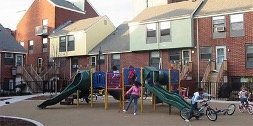












Our research on new church development in Greater Boston yielded general information with a special focus on women in leadership. The hope is that this study can become a source of “mainstreaming” gender parity discourse within the church, as part of an overall discussion of the practical needs of church planters in the areas of leadership and ministry development.